
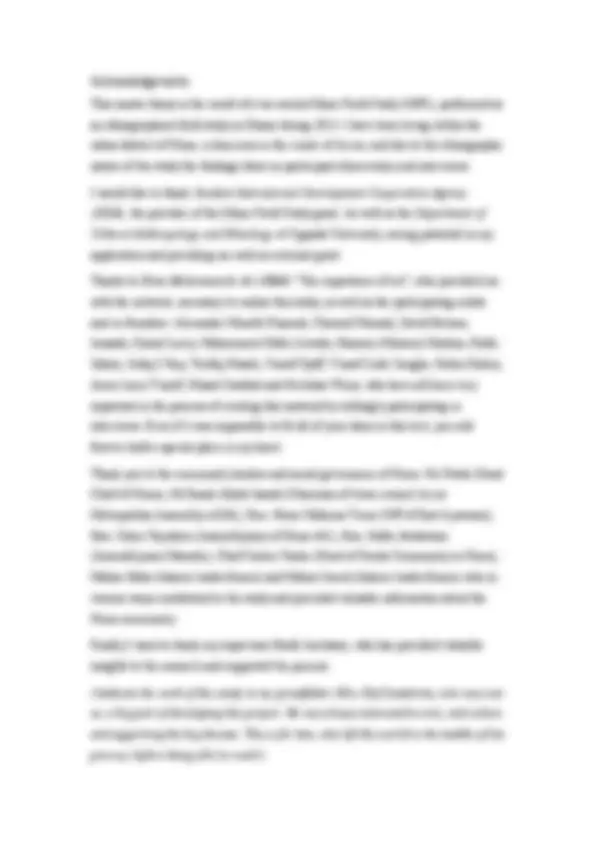
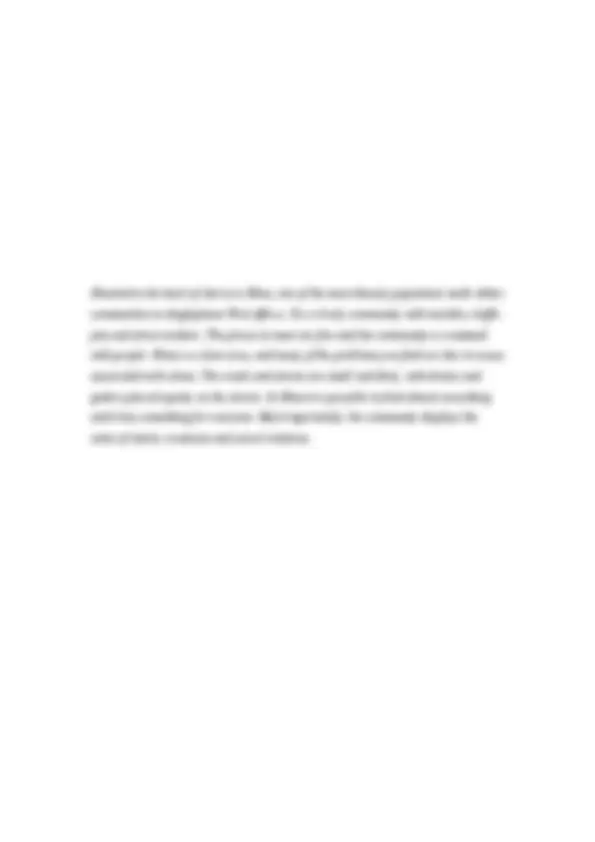
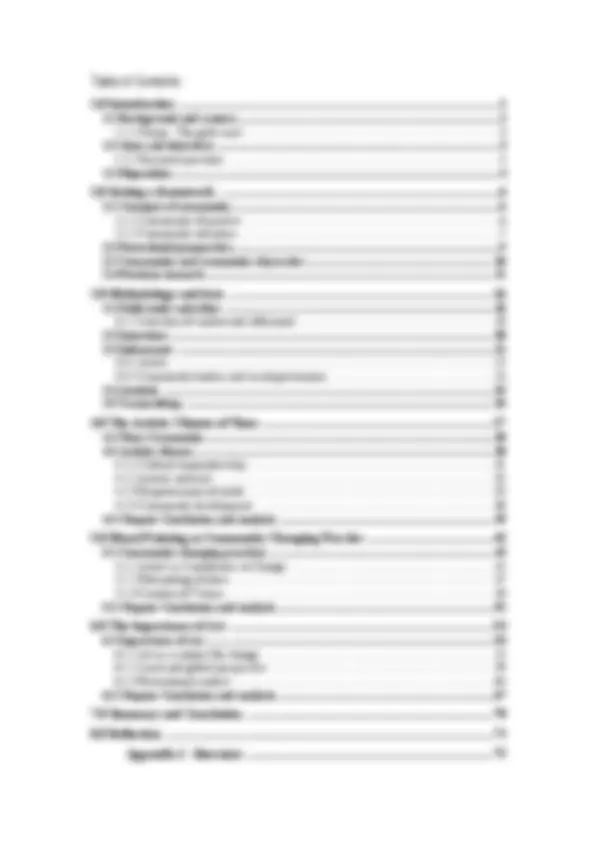
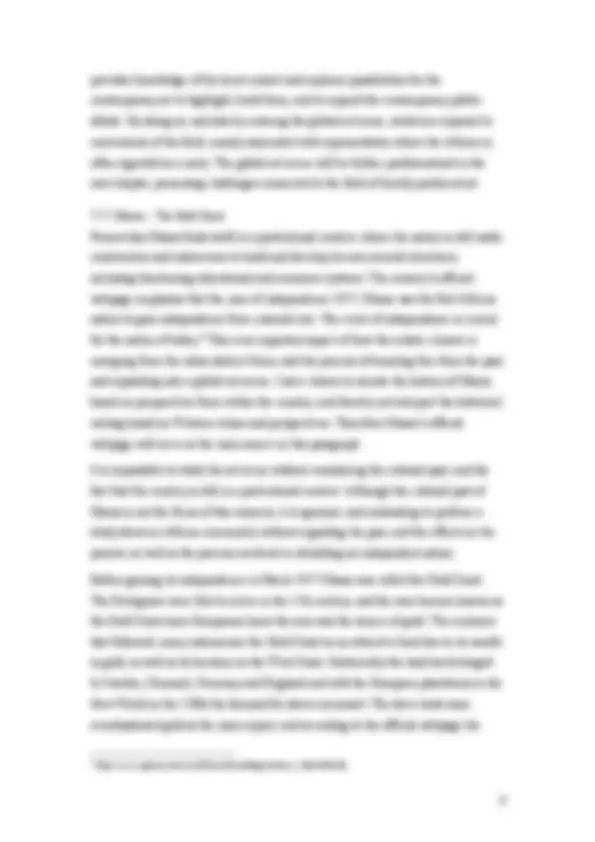

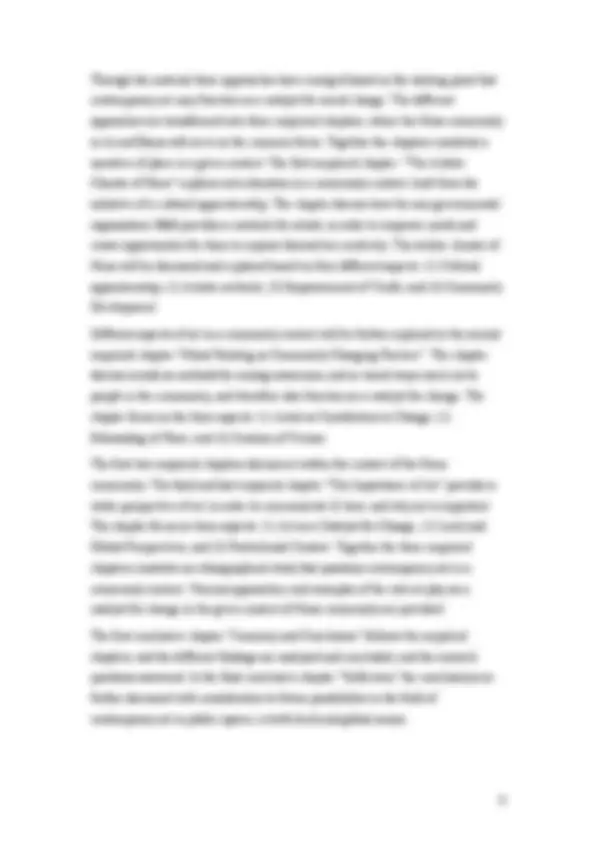
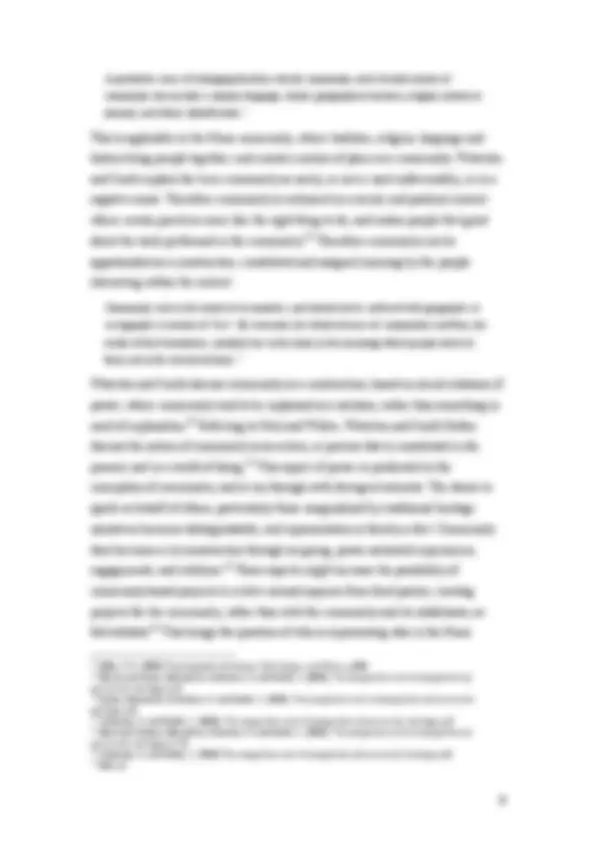
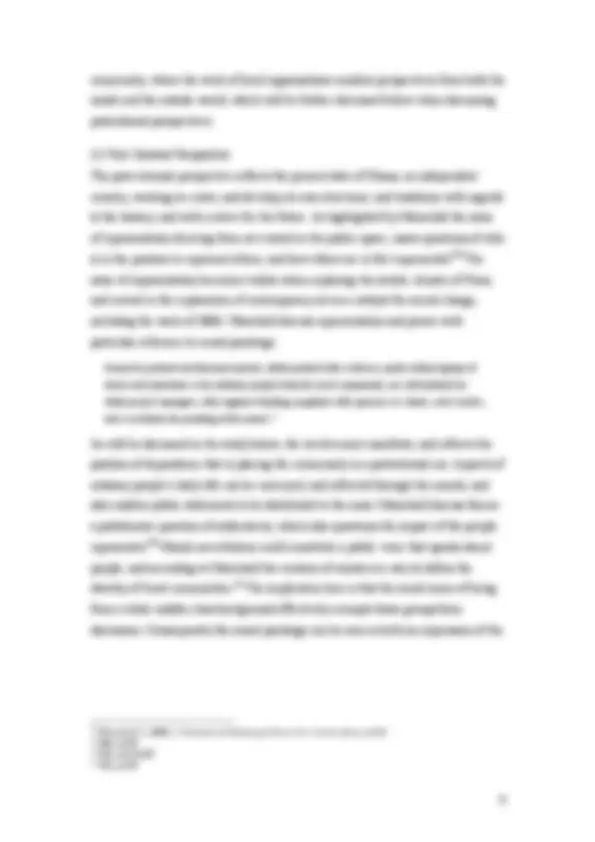
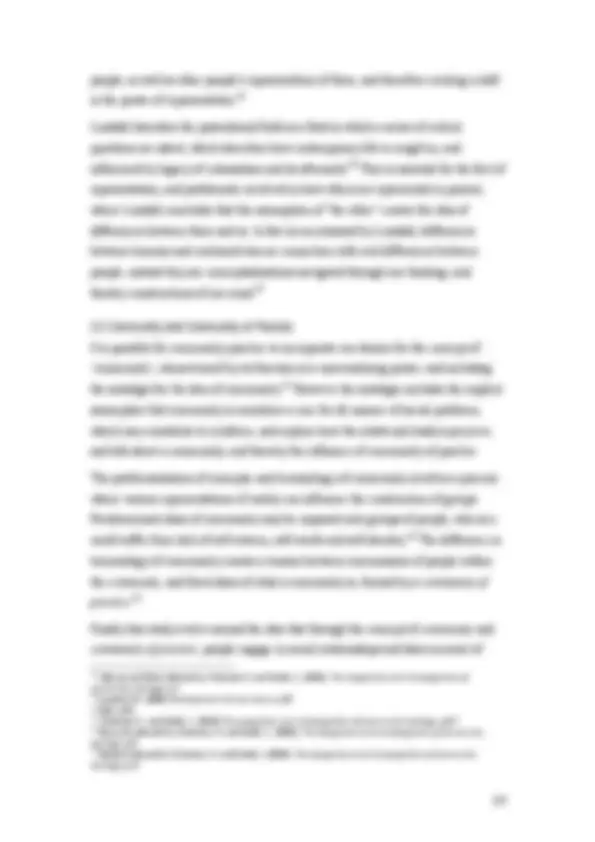
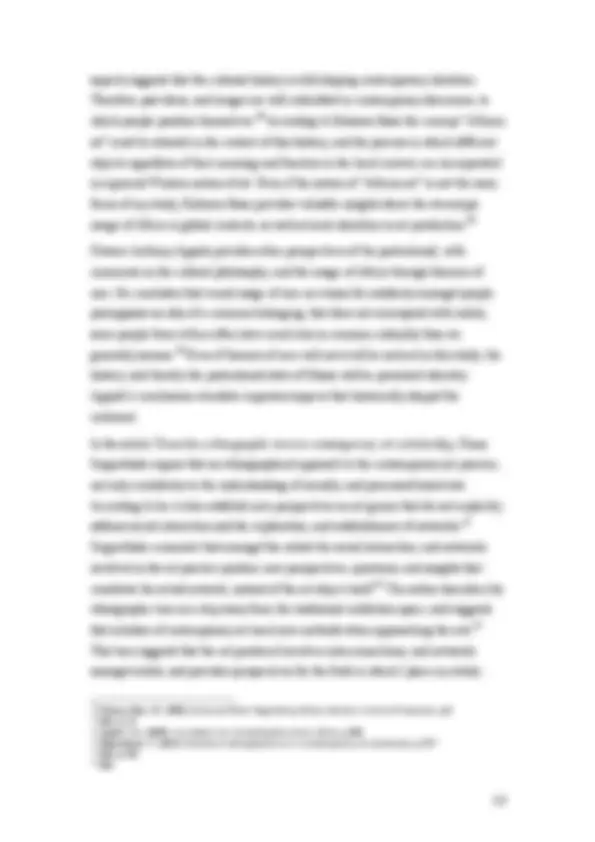
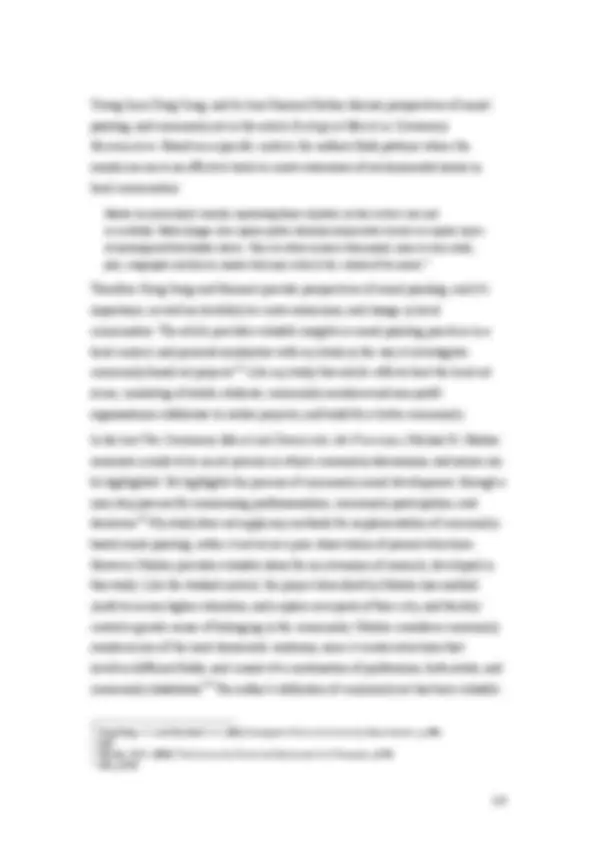
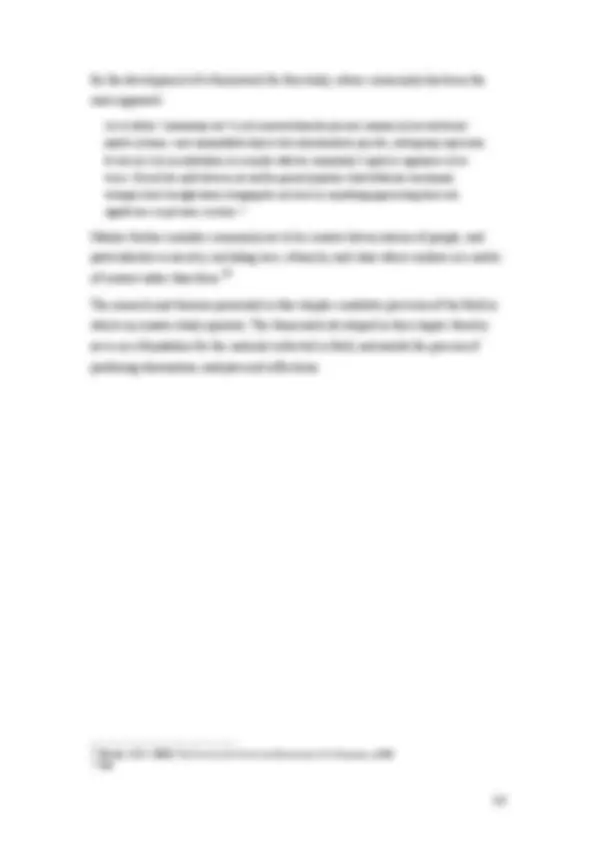
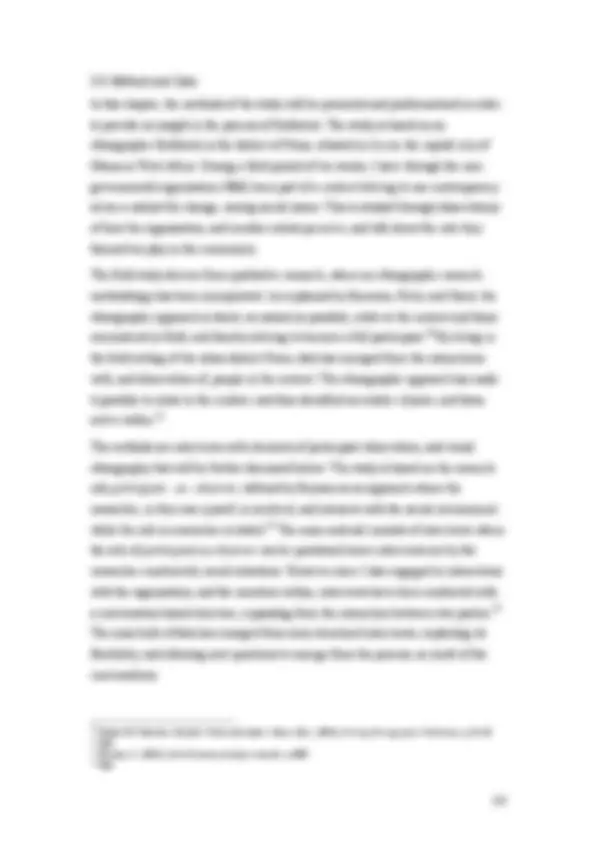
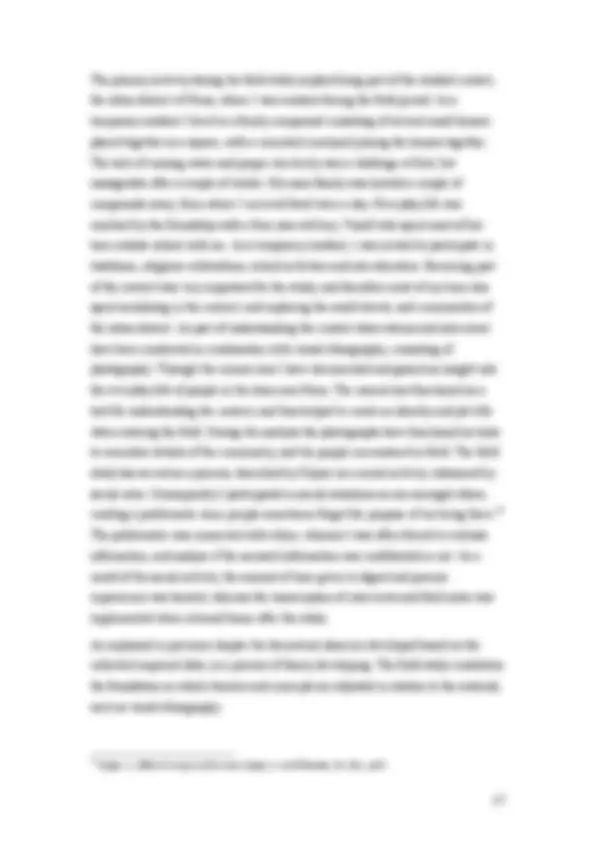
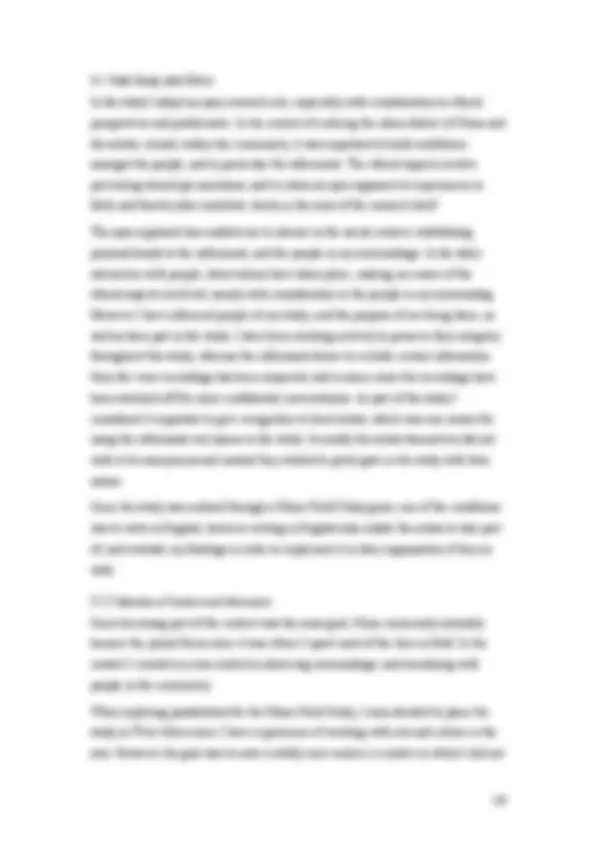
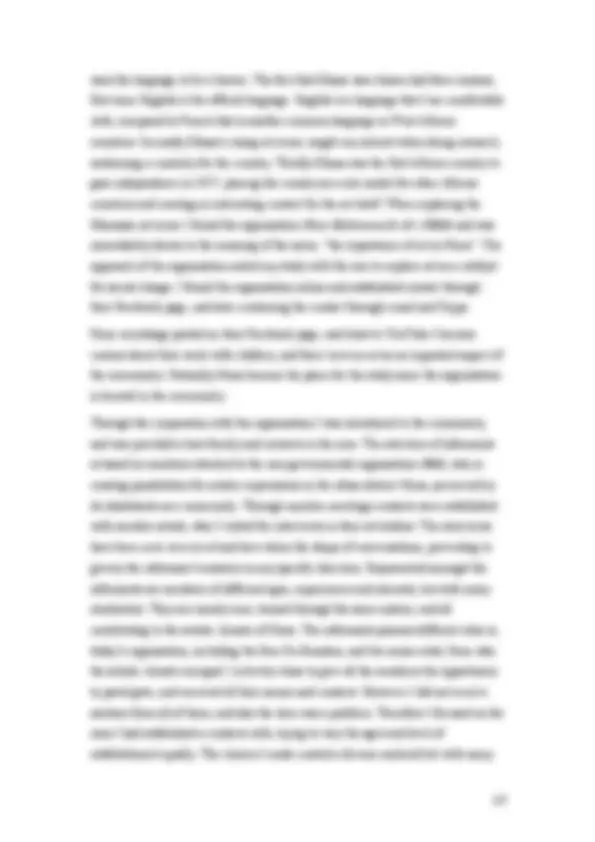
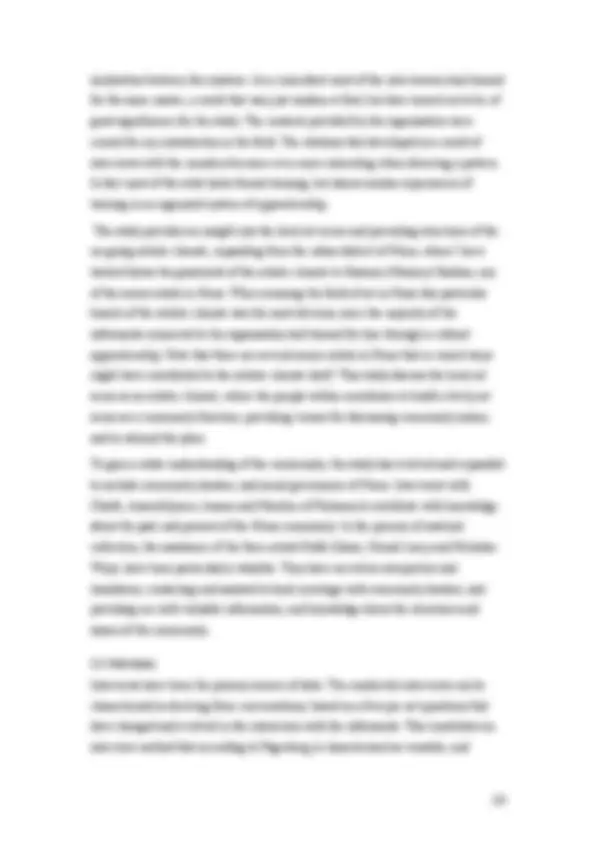
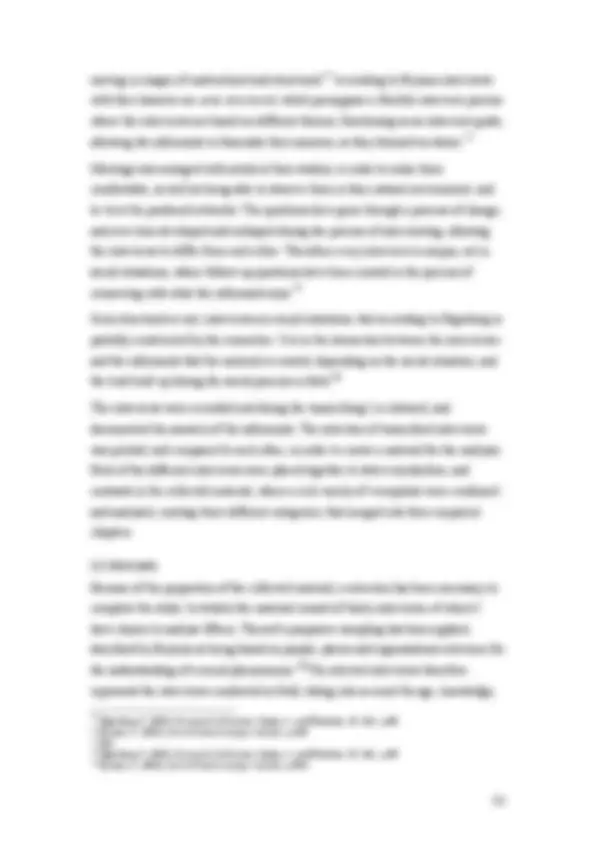
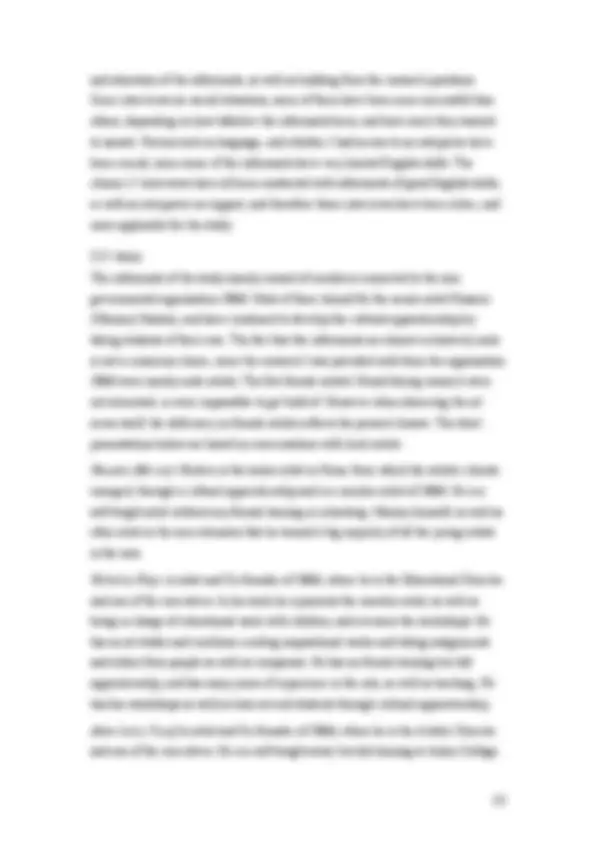
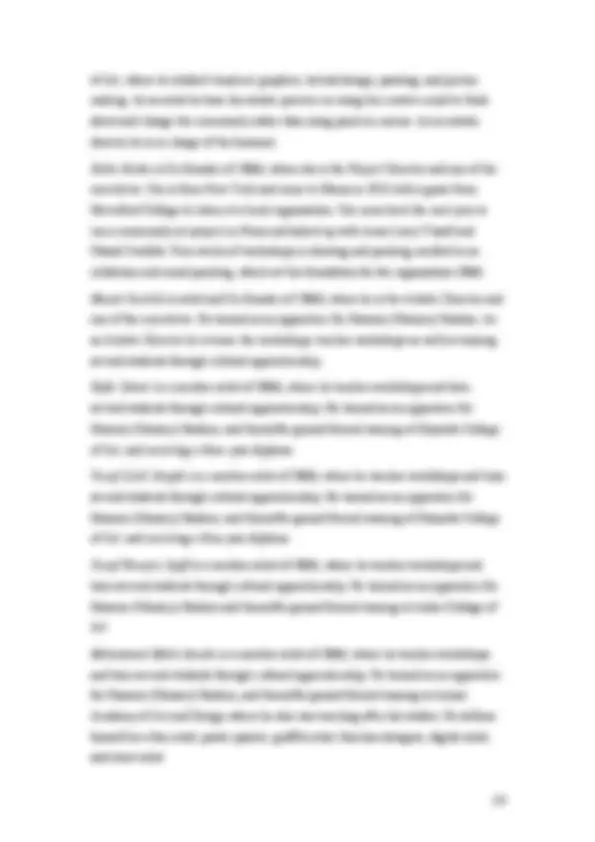
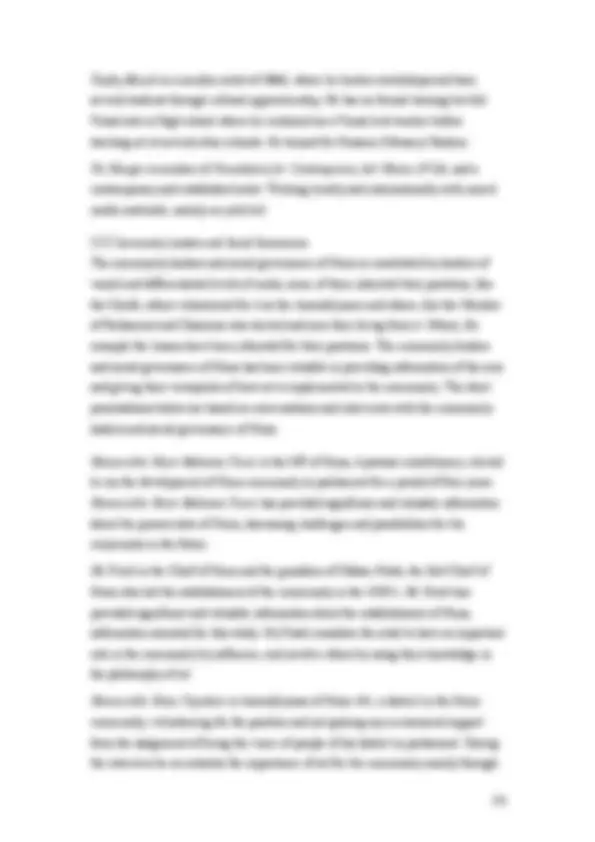
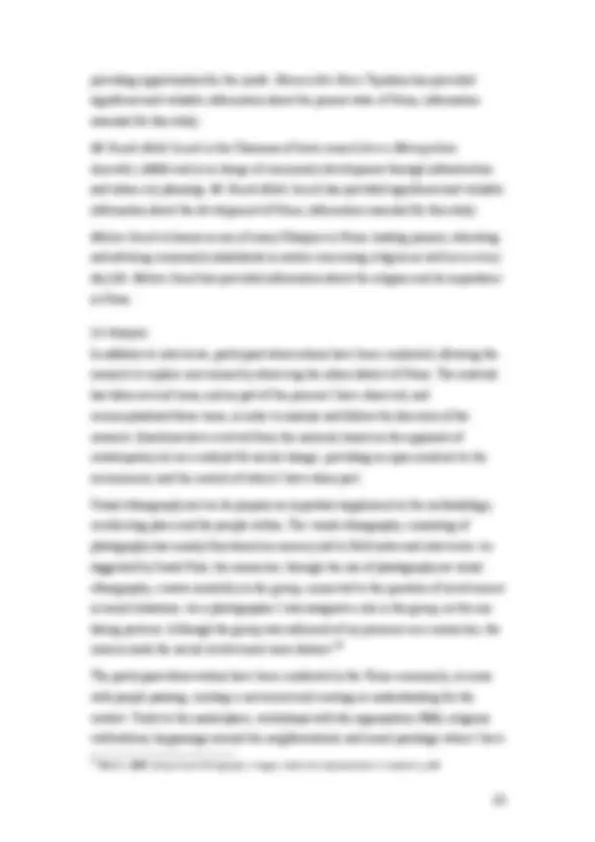

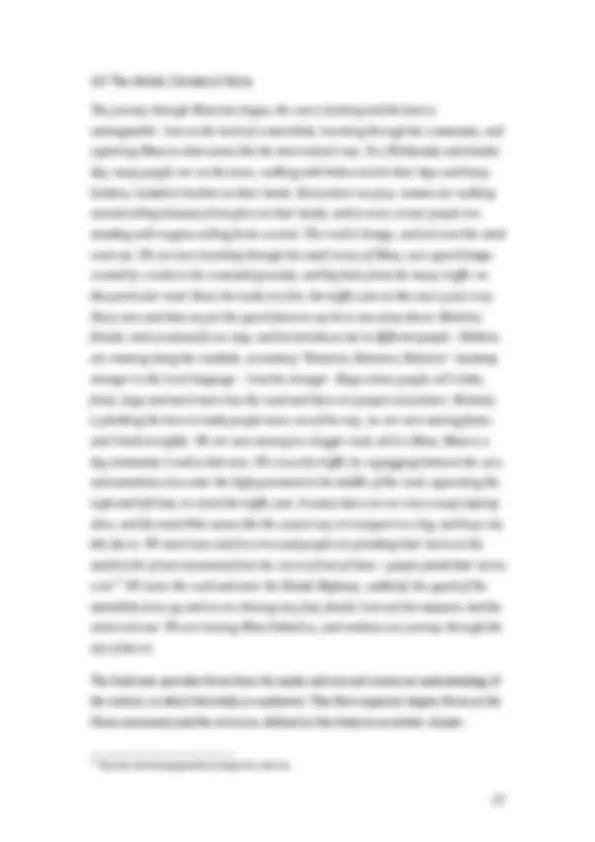
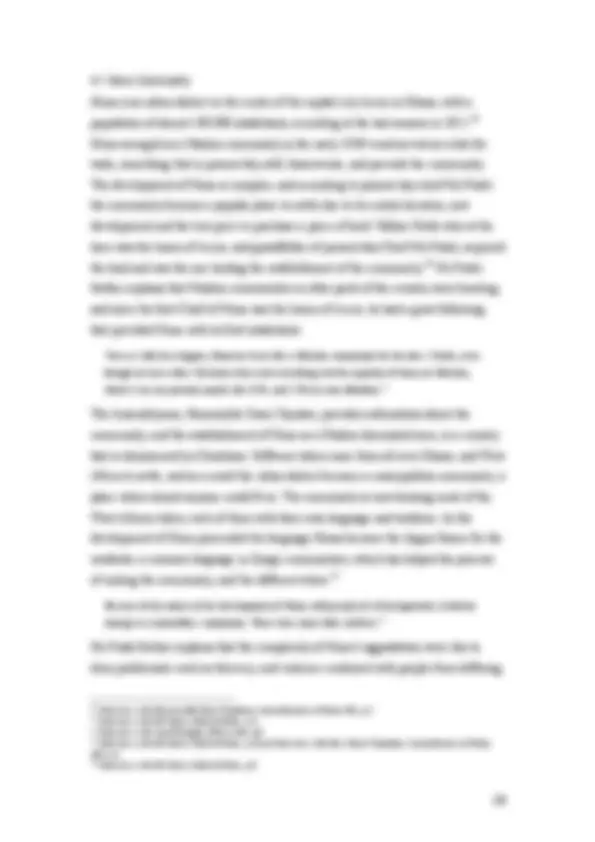
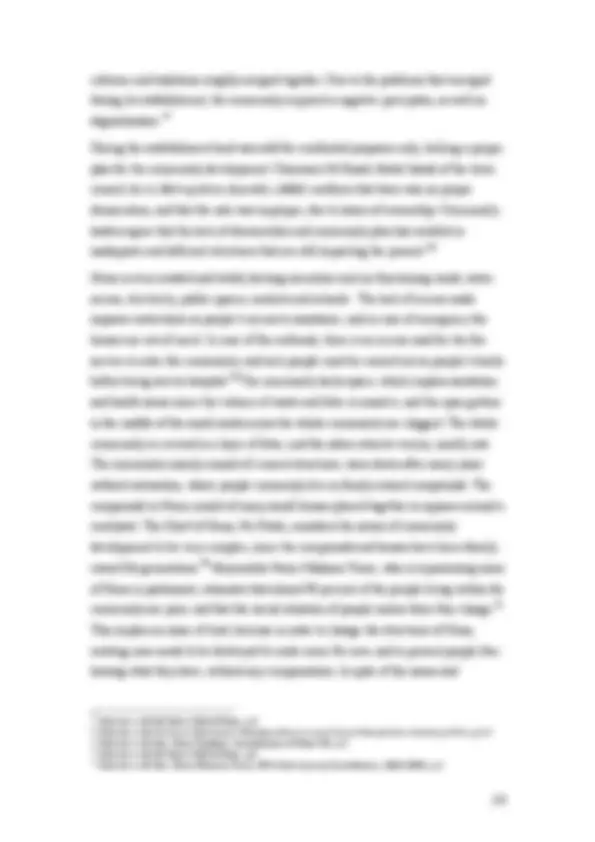
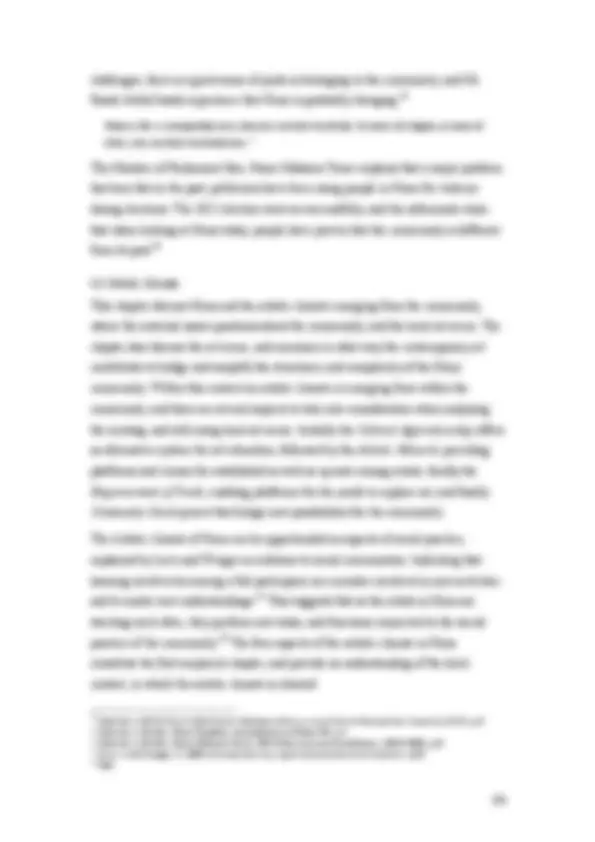
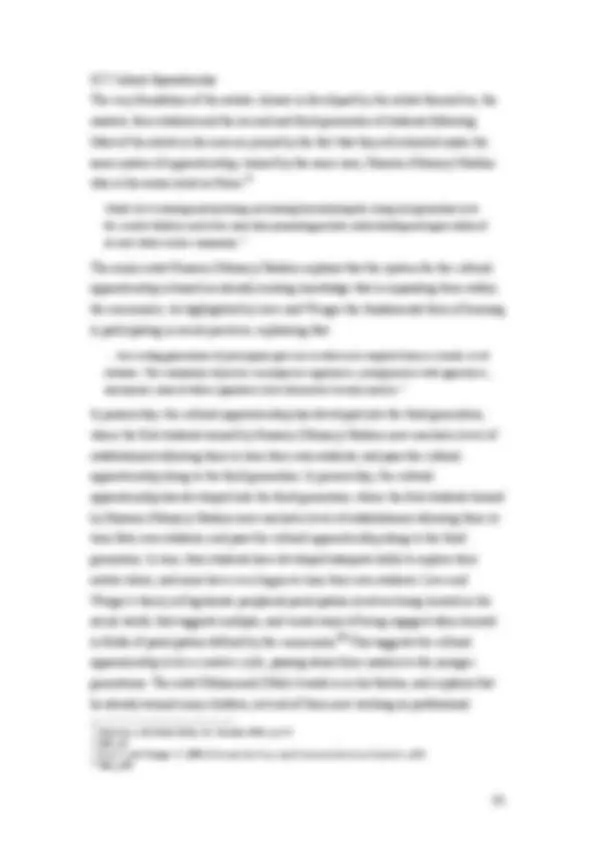
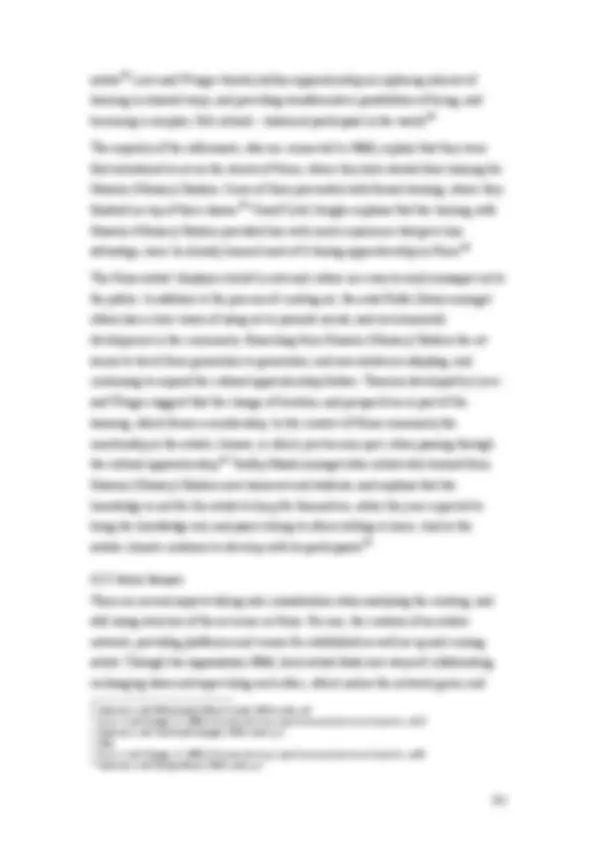
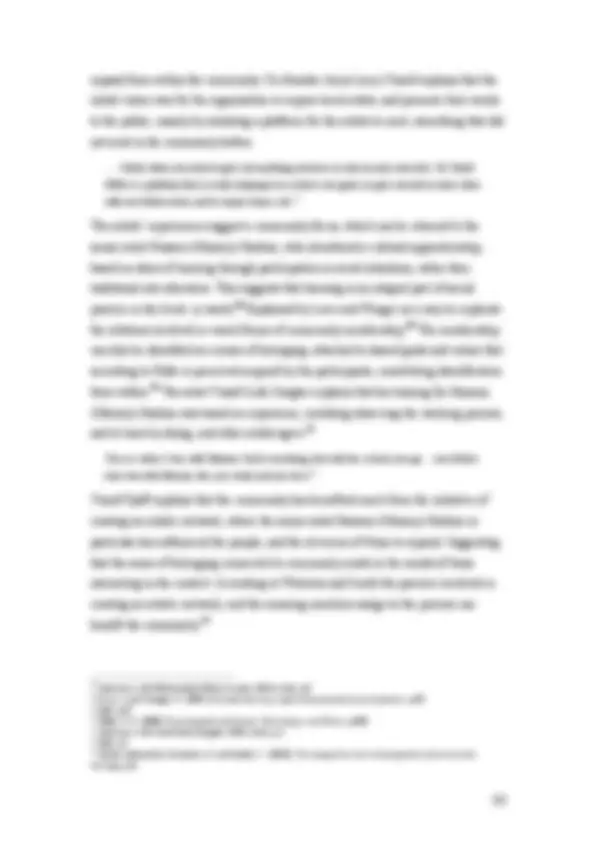
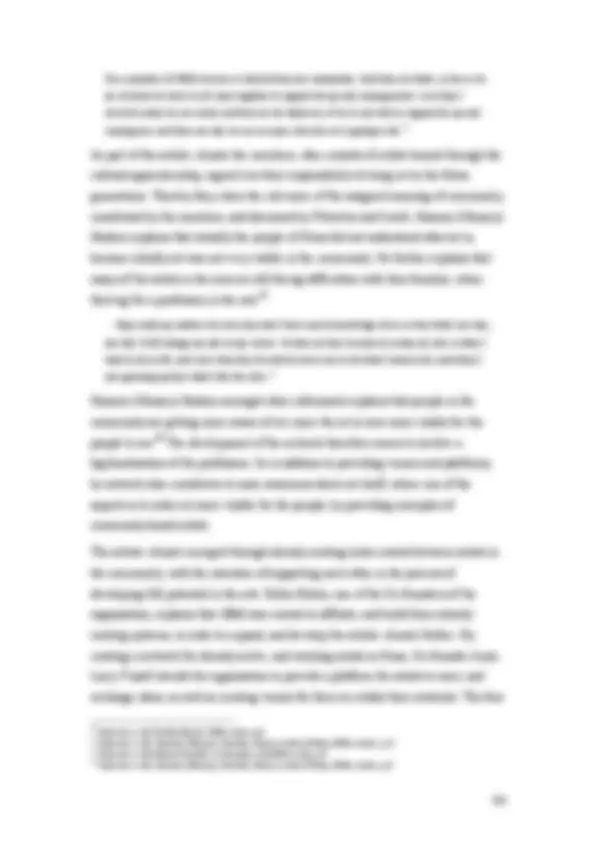
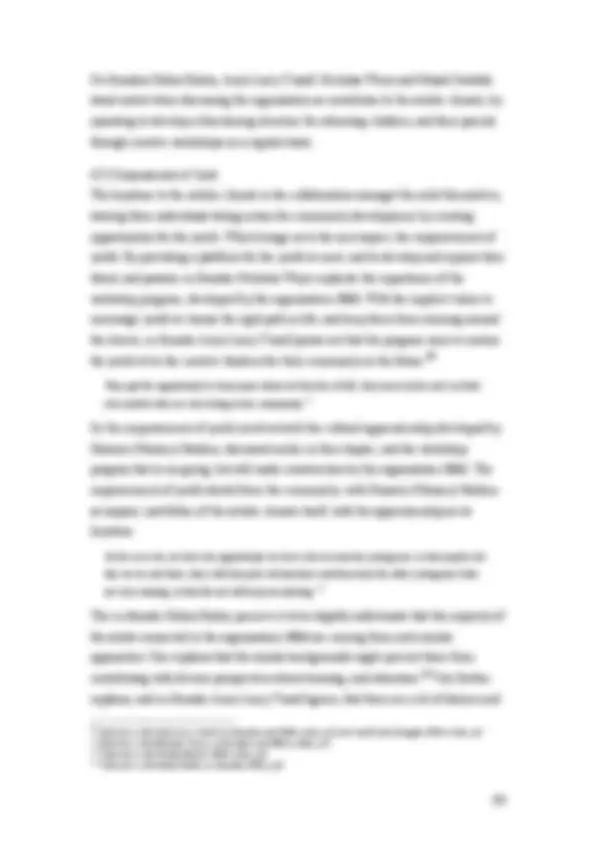
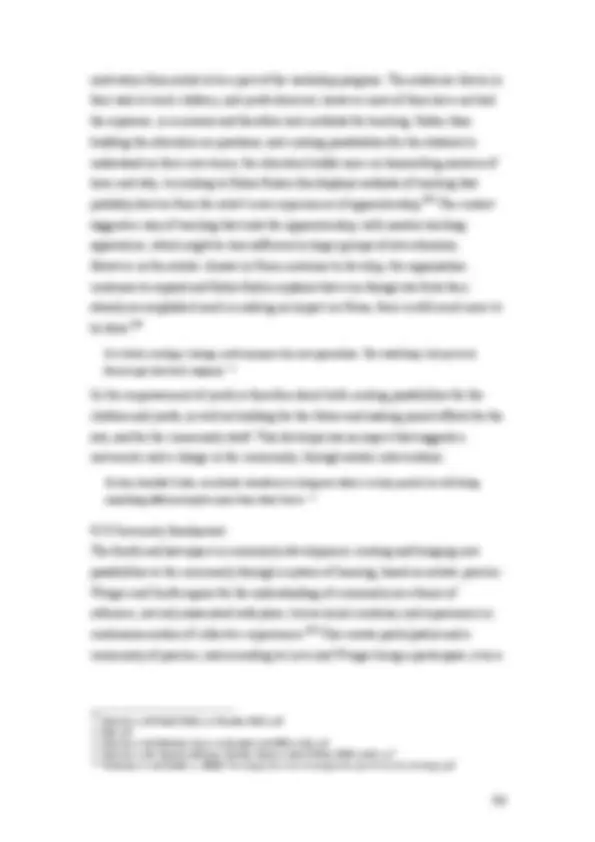
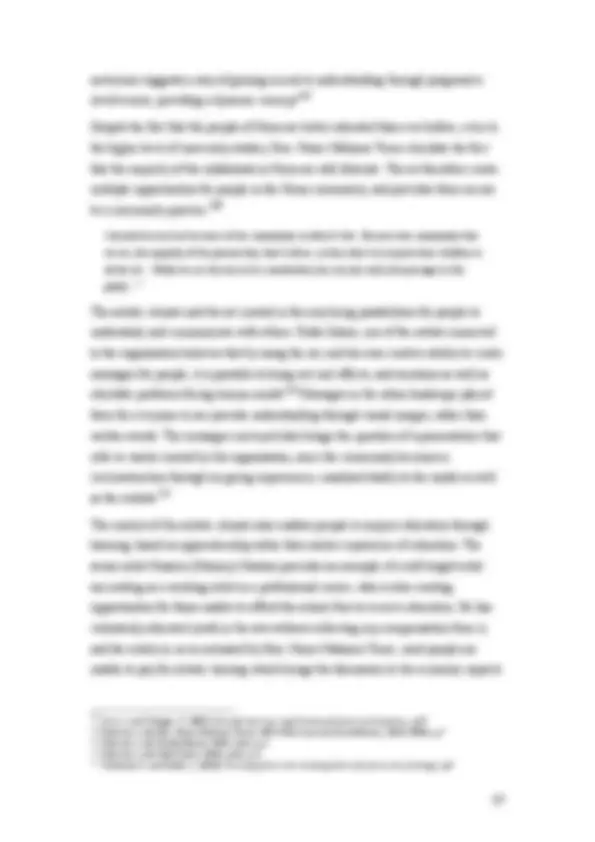
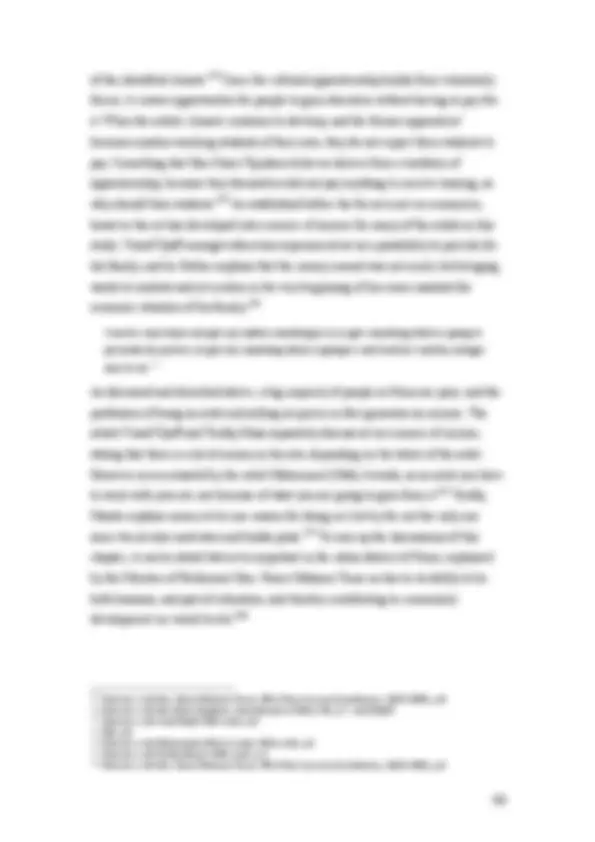
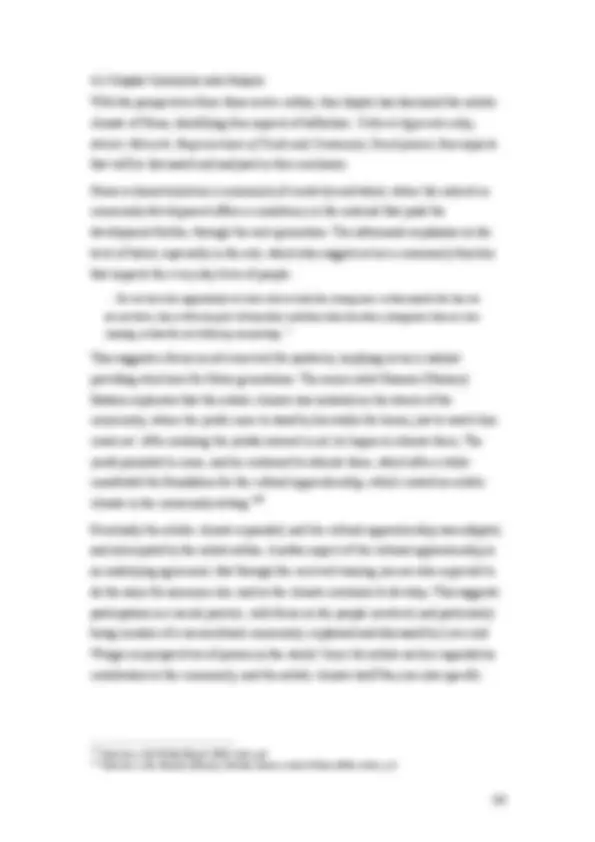
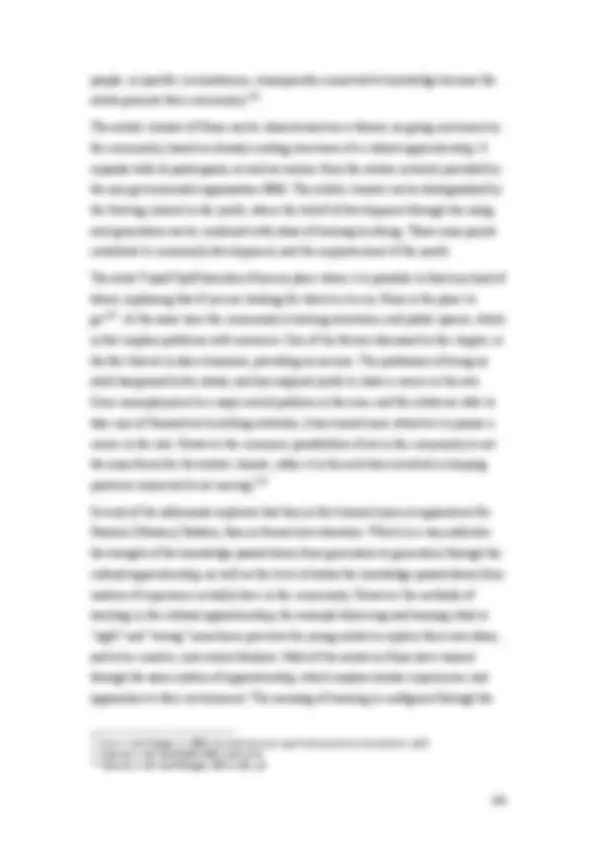

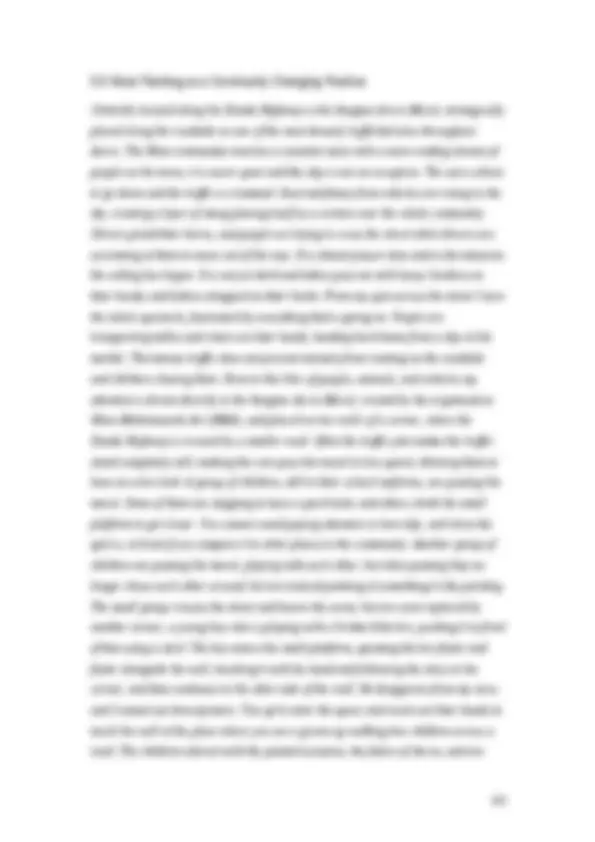
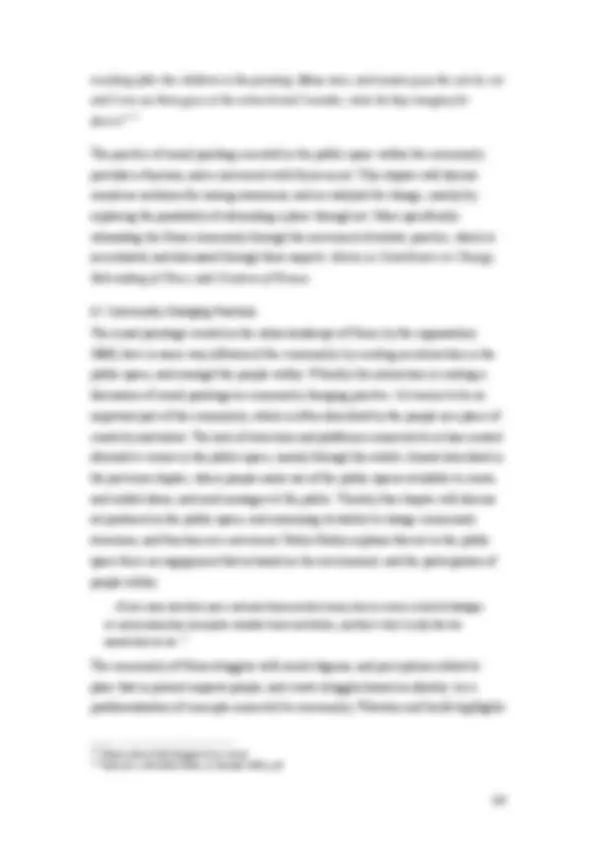
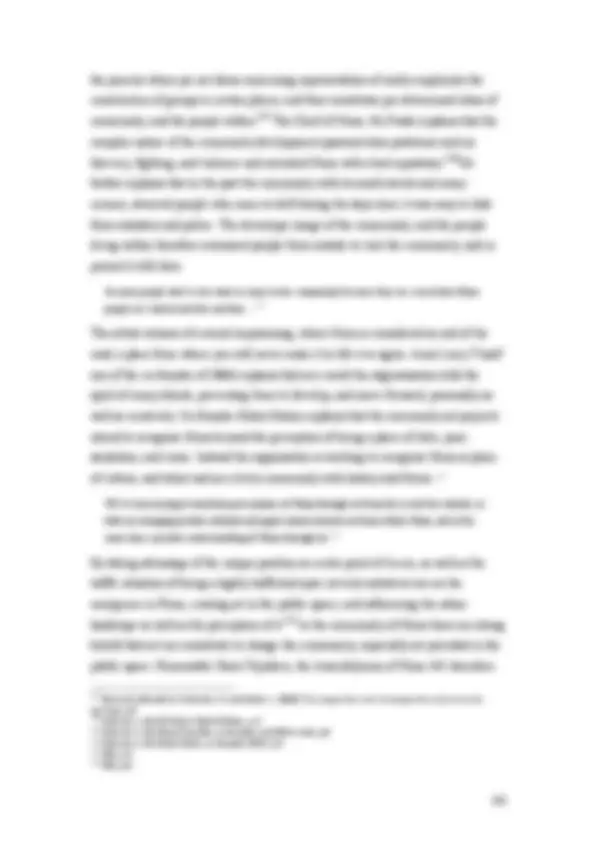
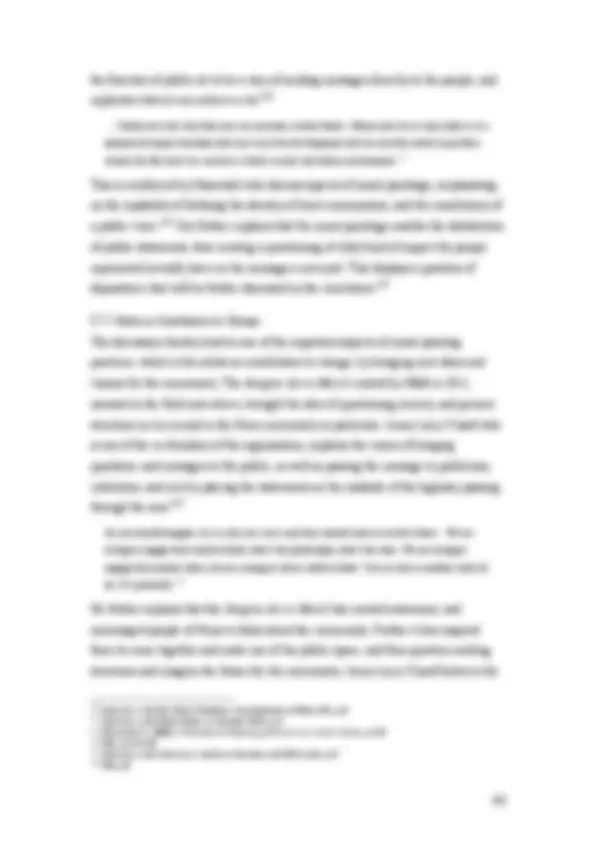
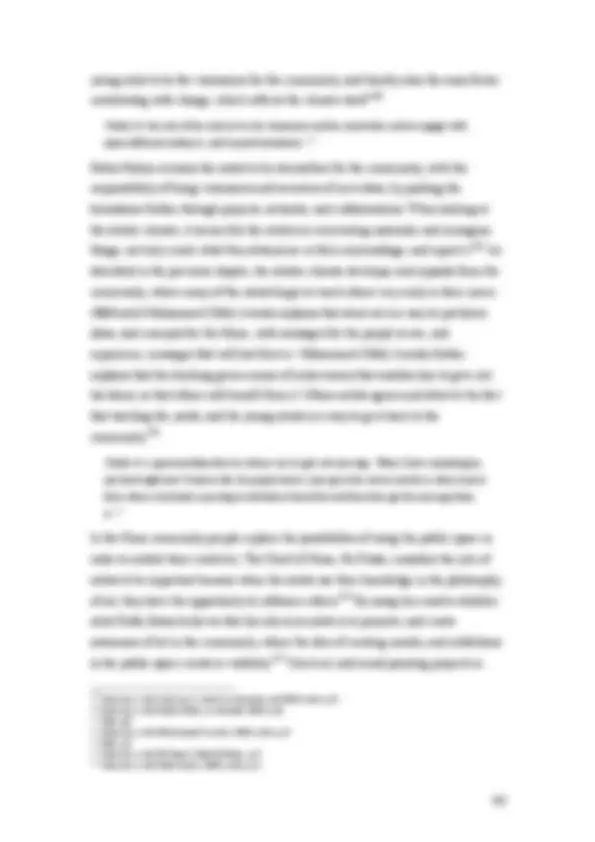
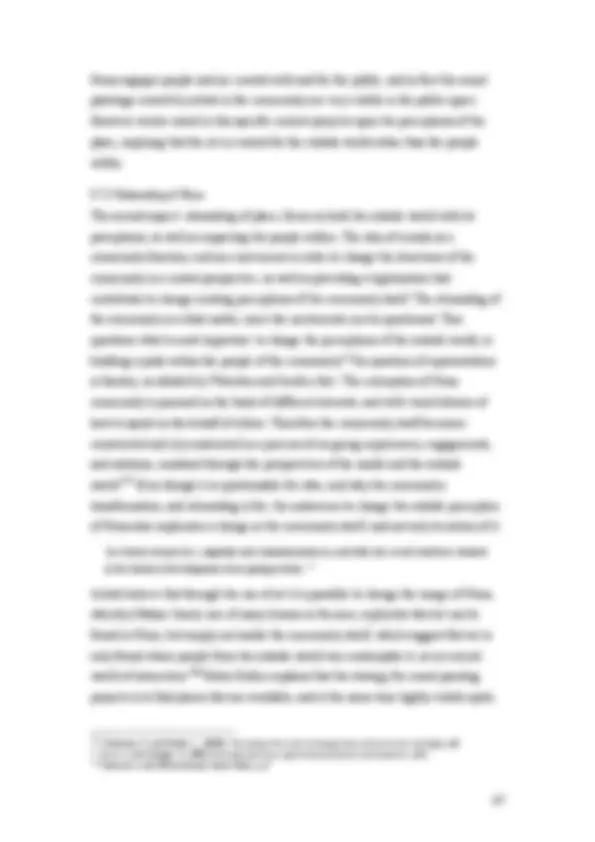
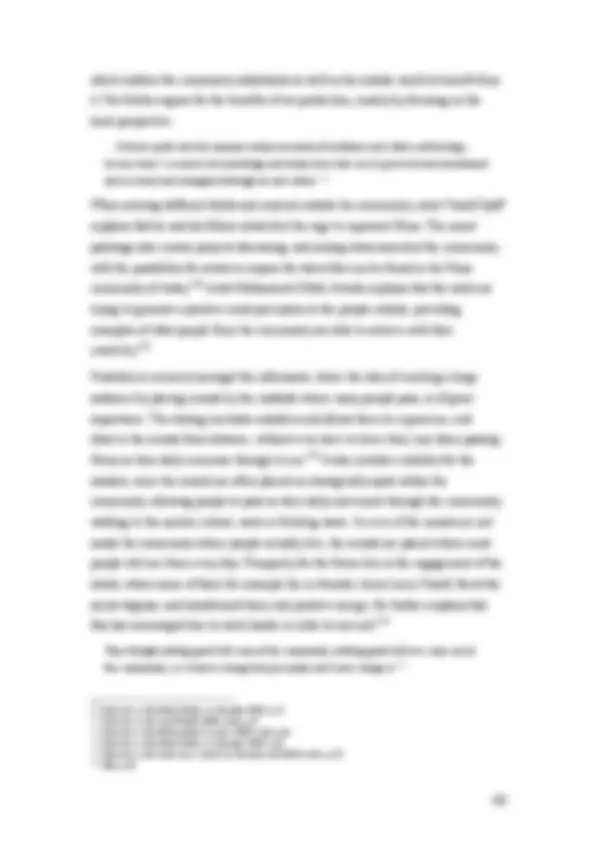
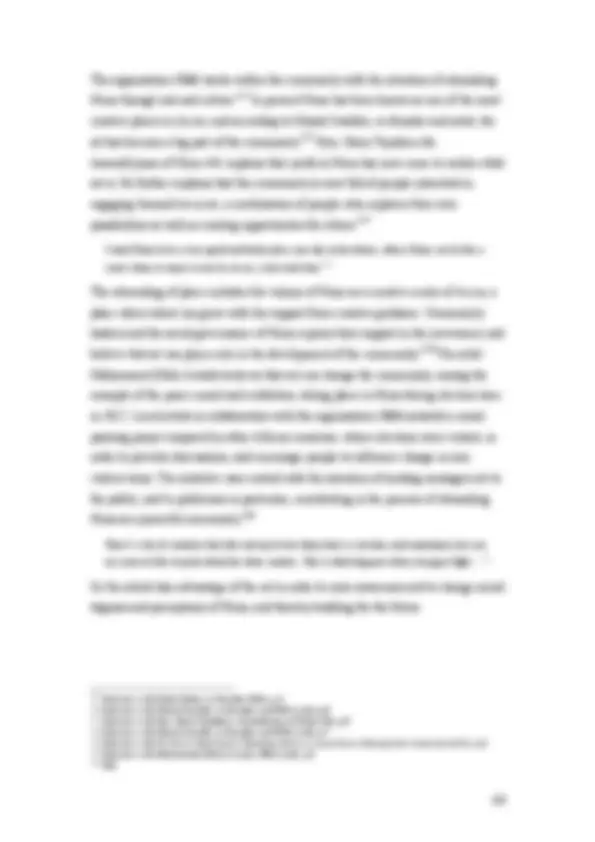
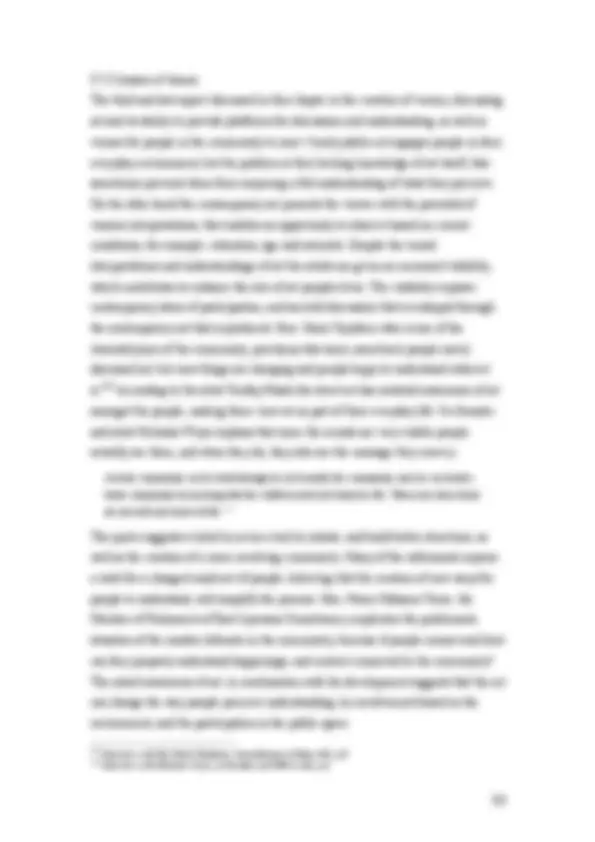
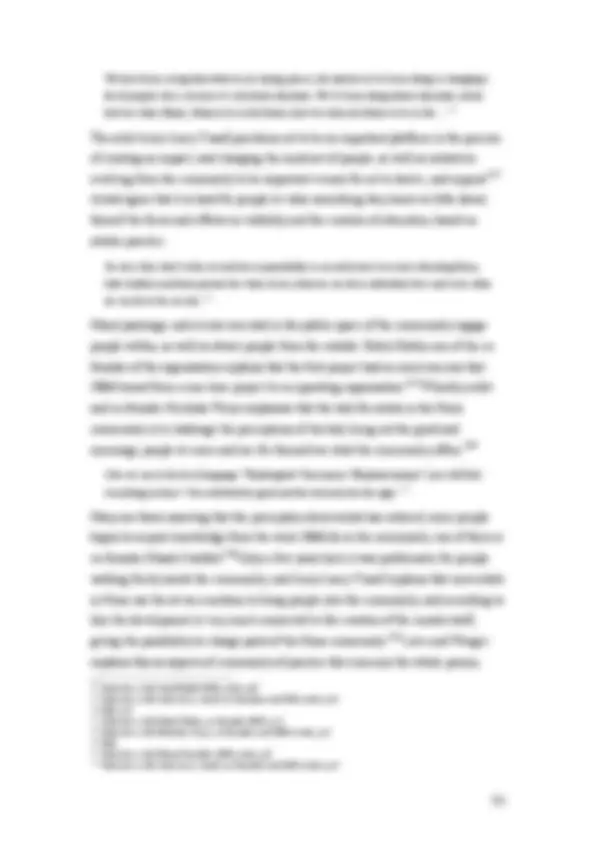
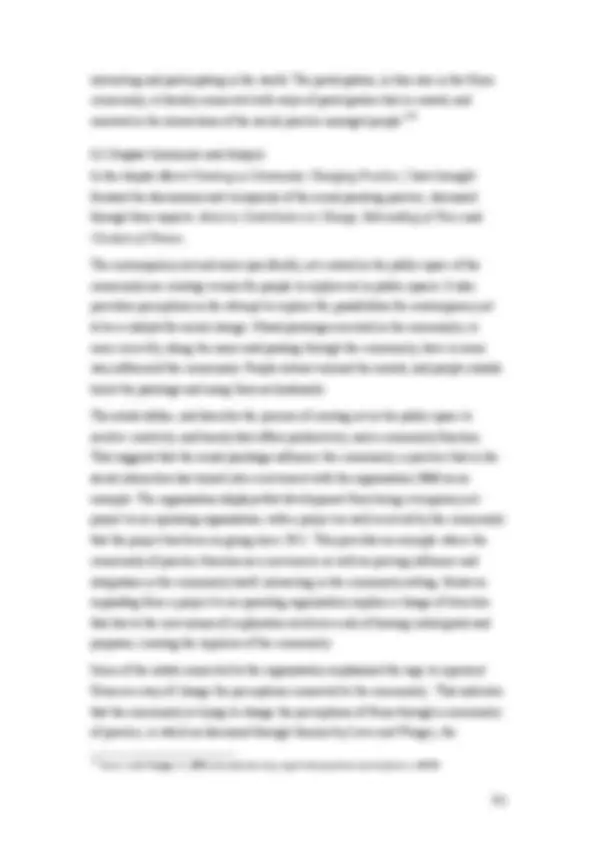
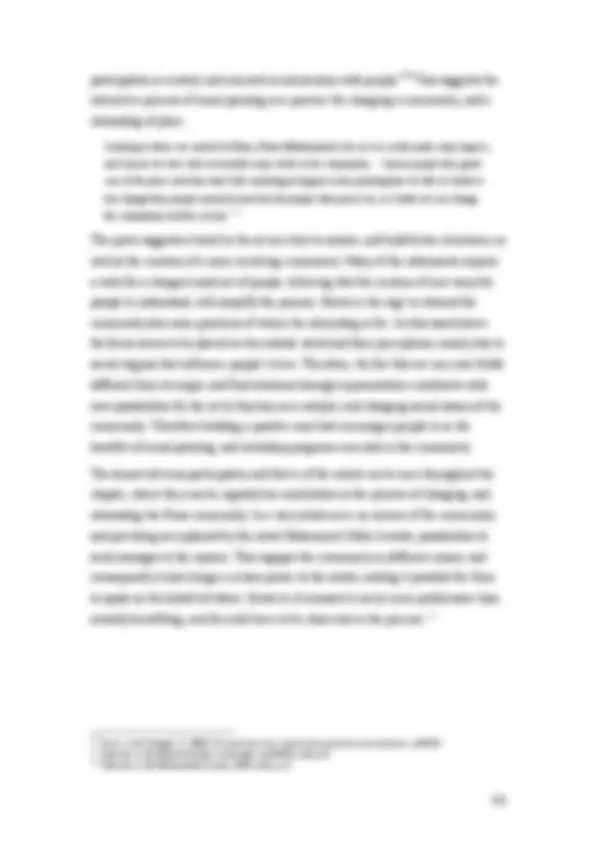
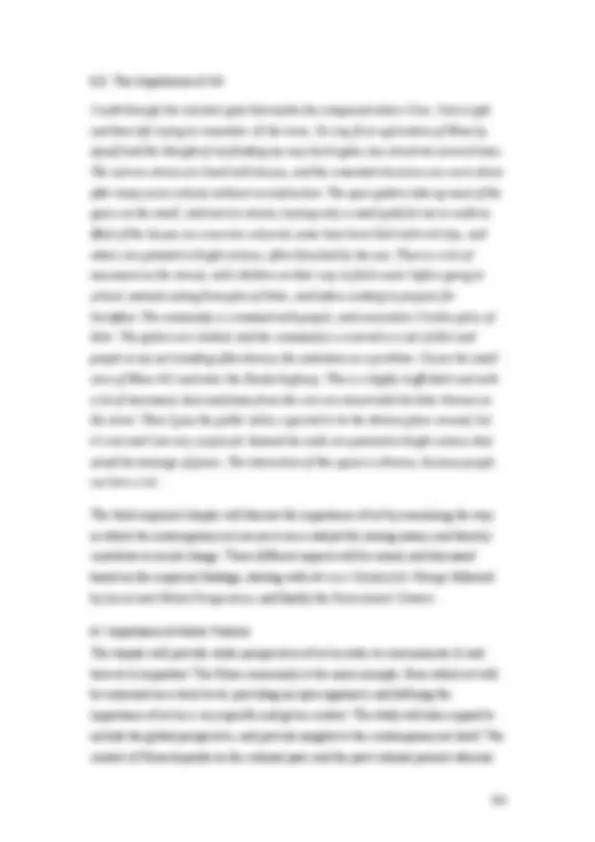
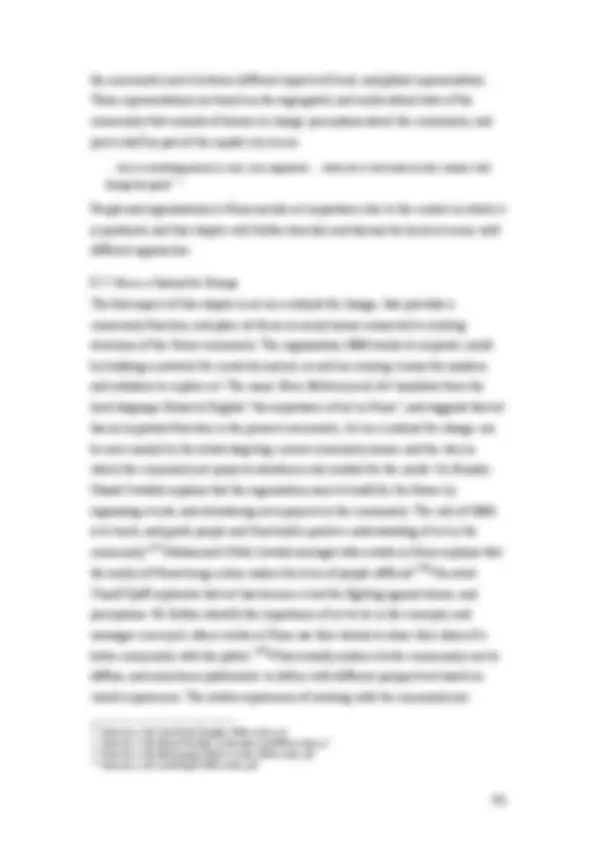
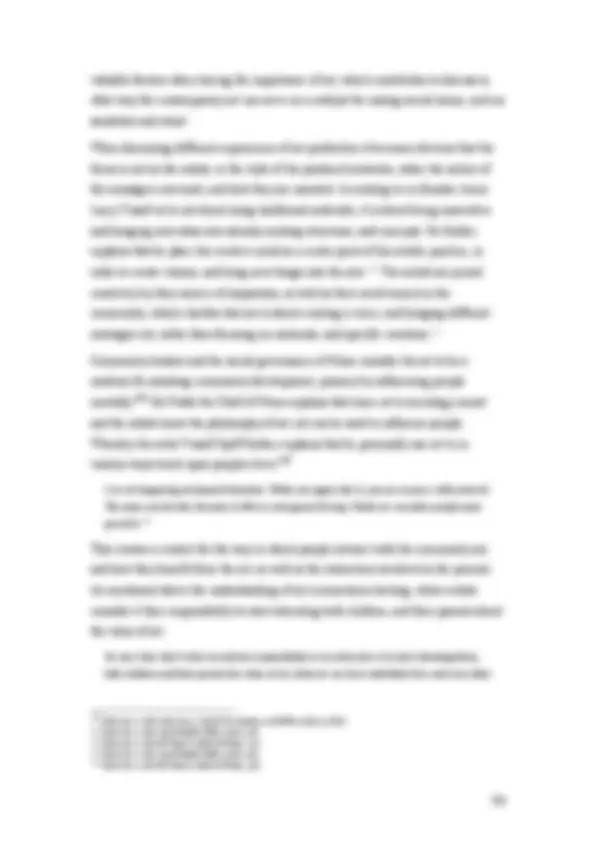
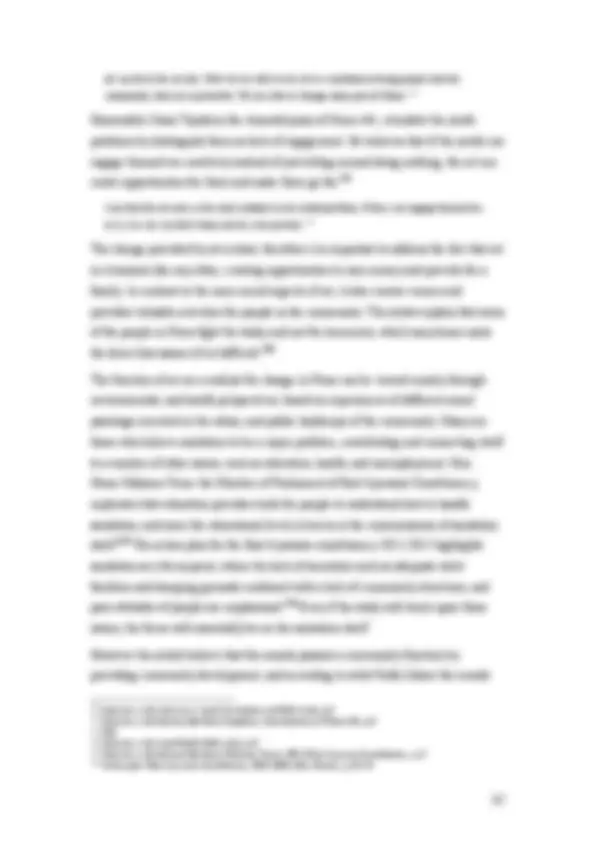
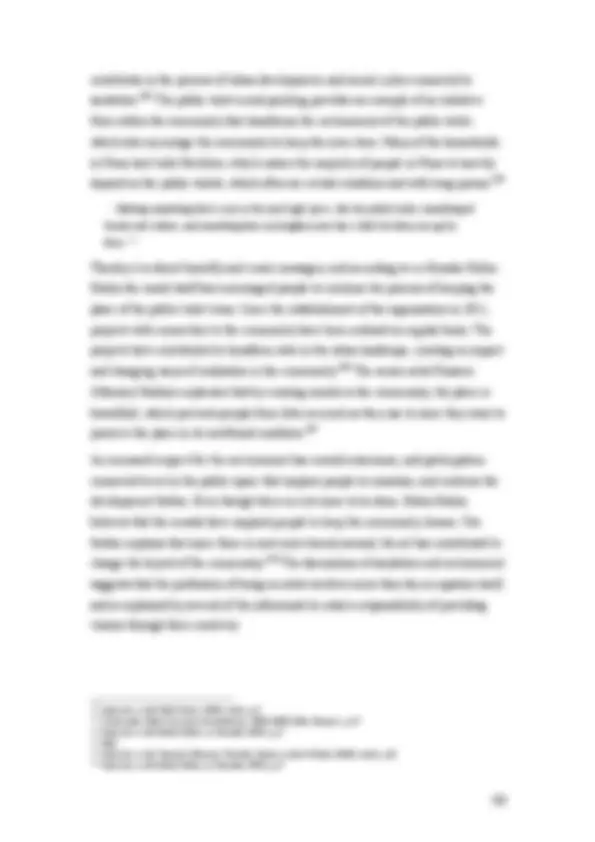
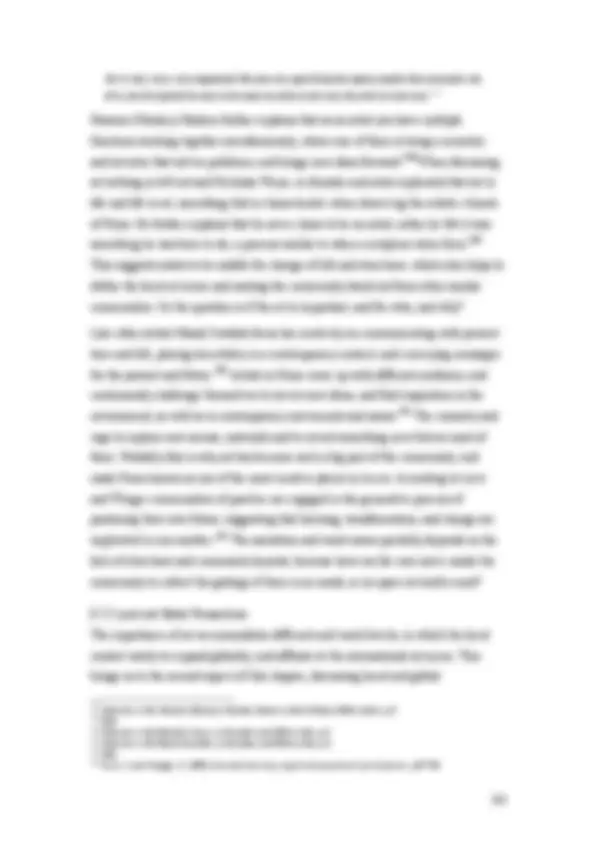
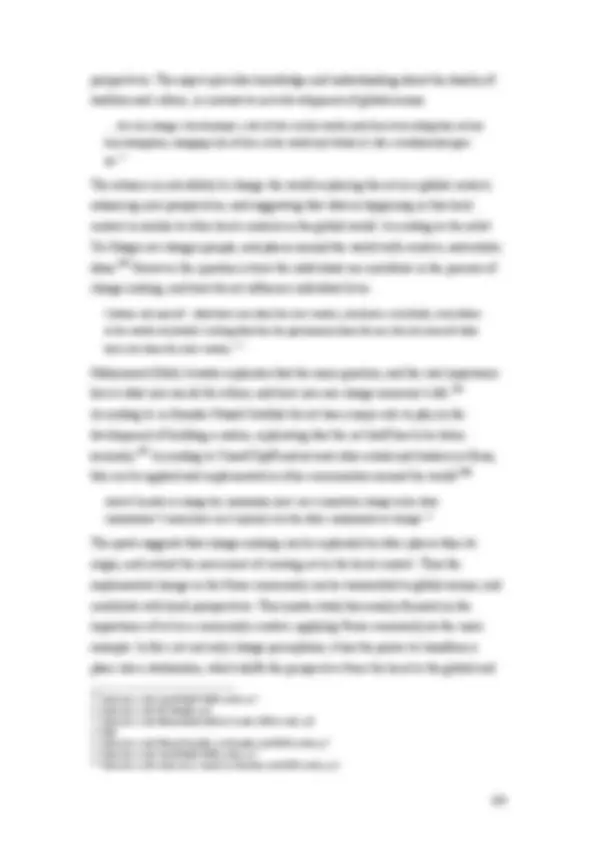
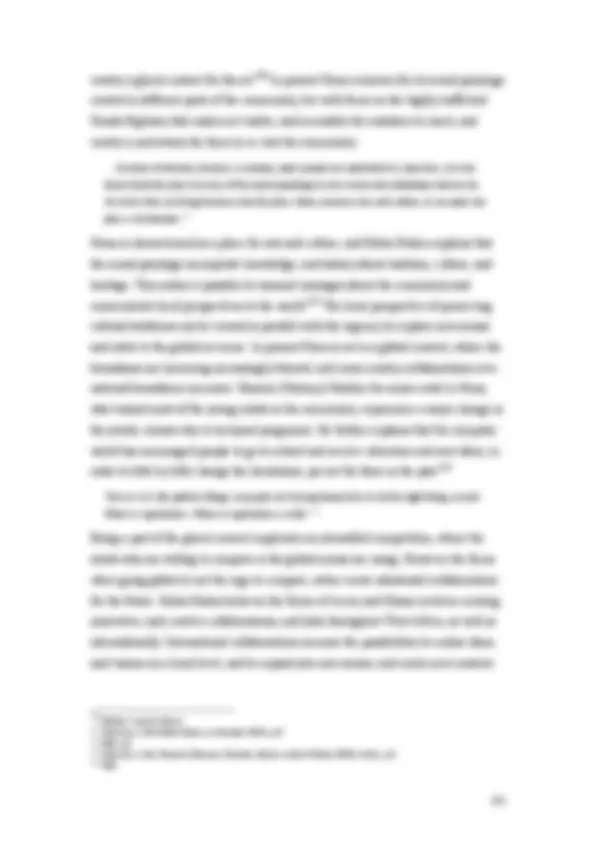
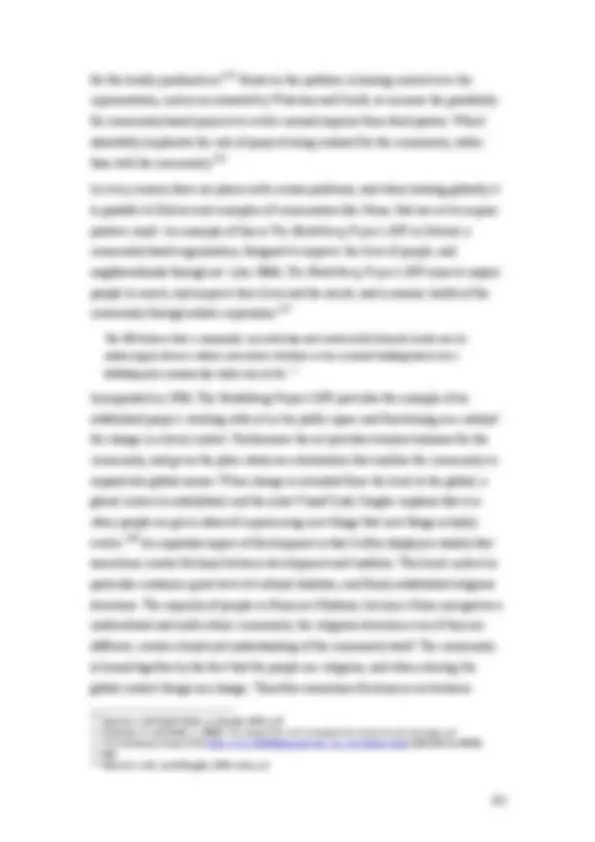
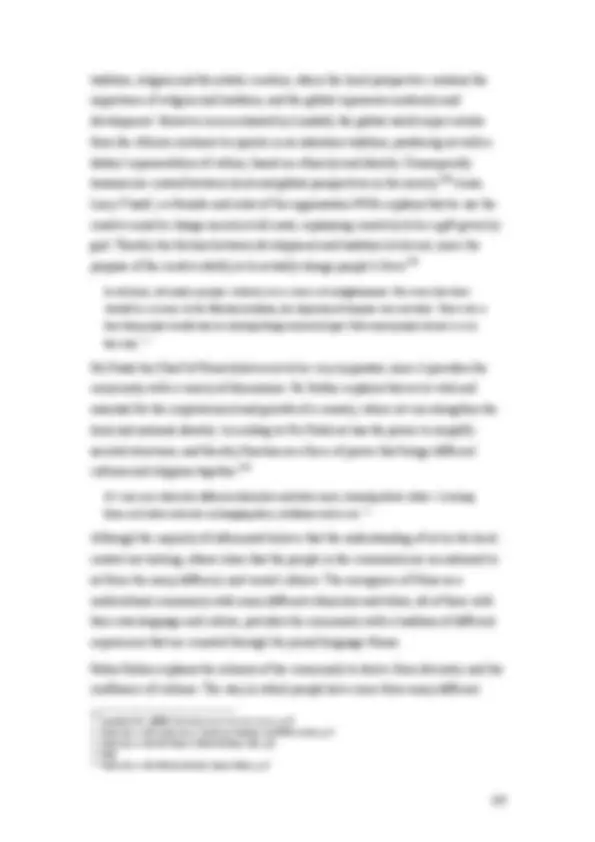
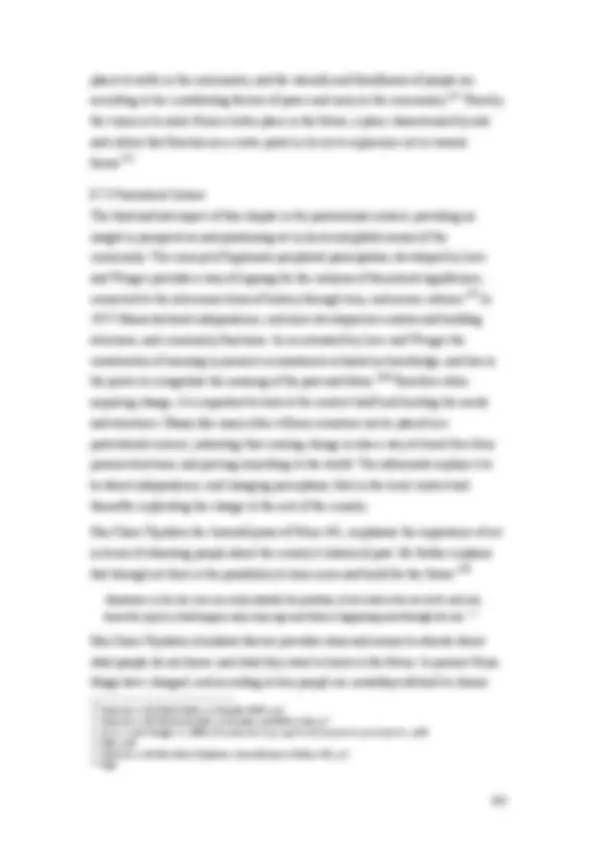
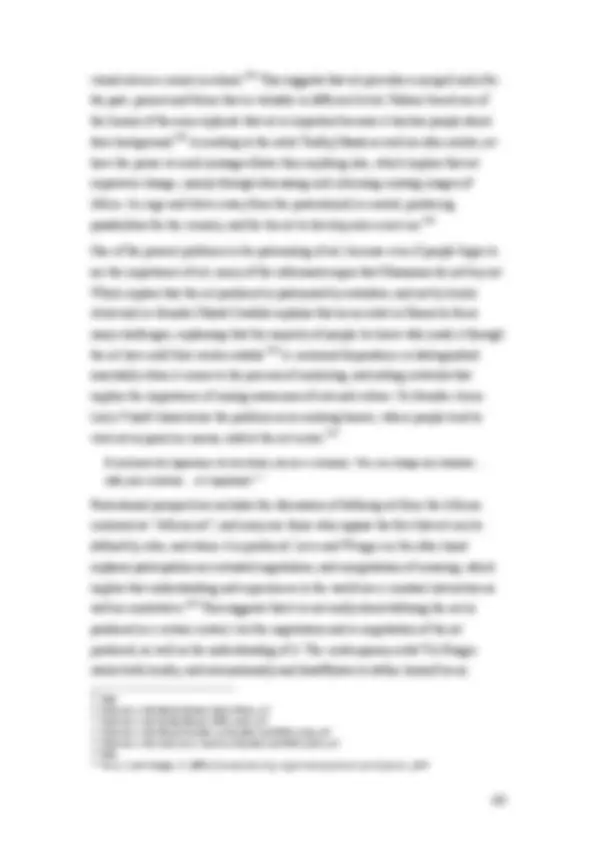
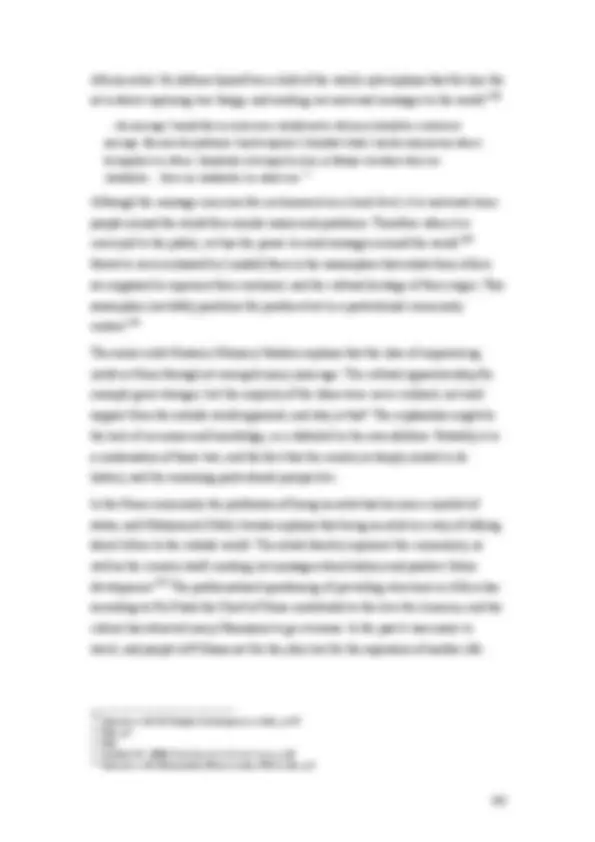
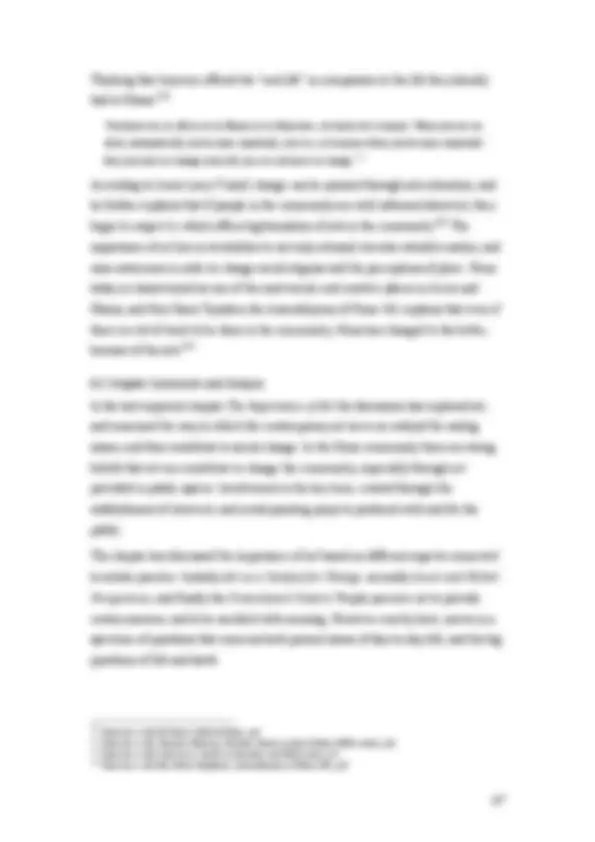
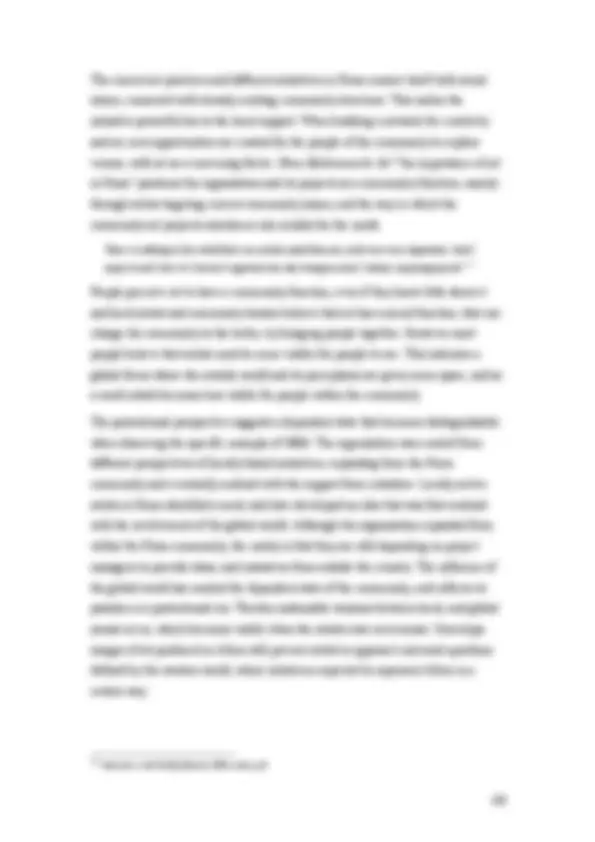
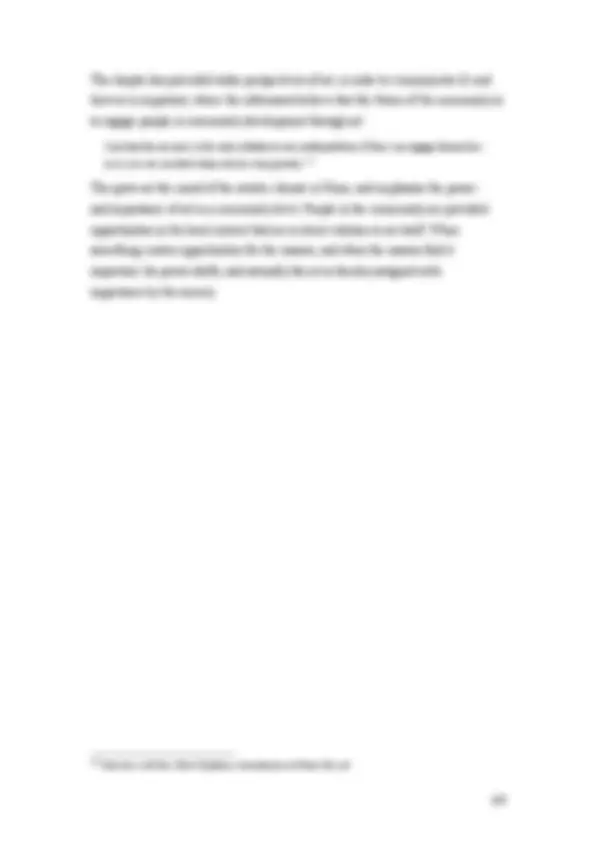
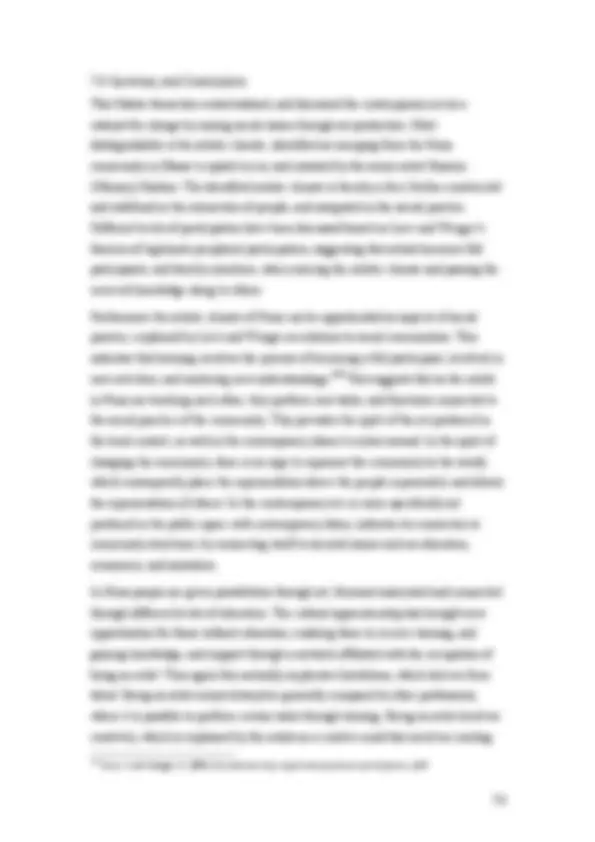
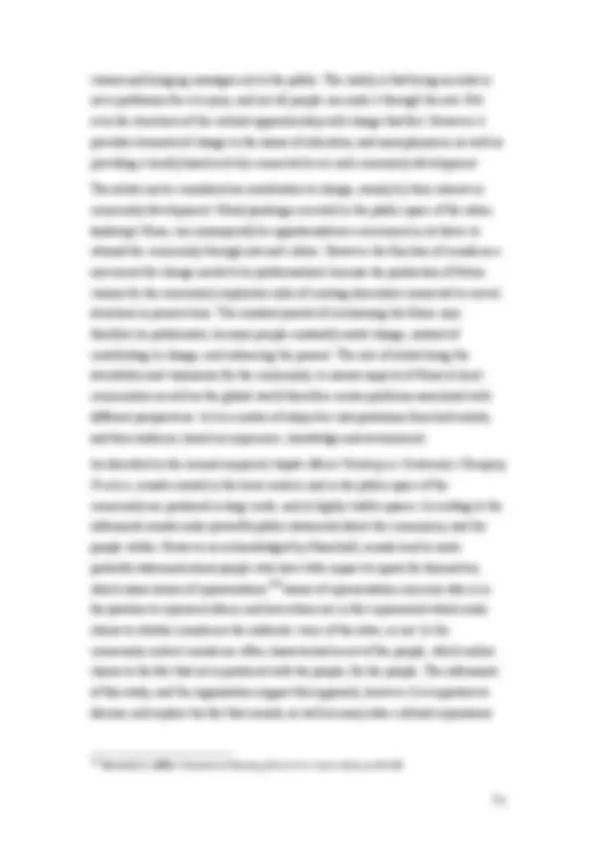
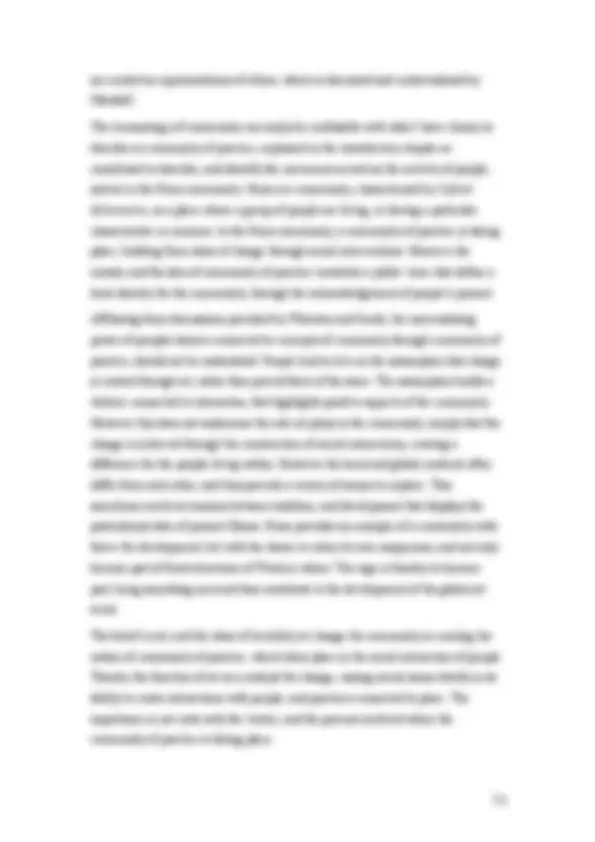
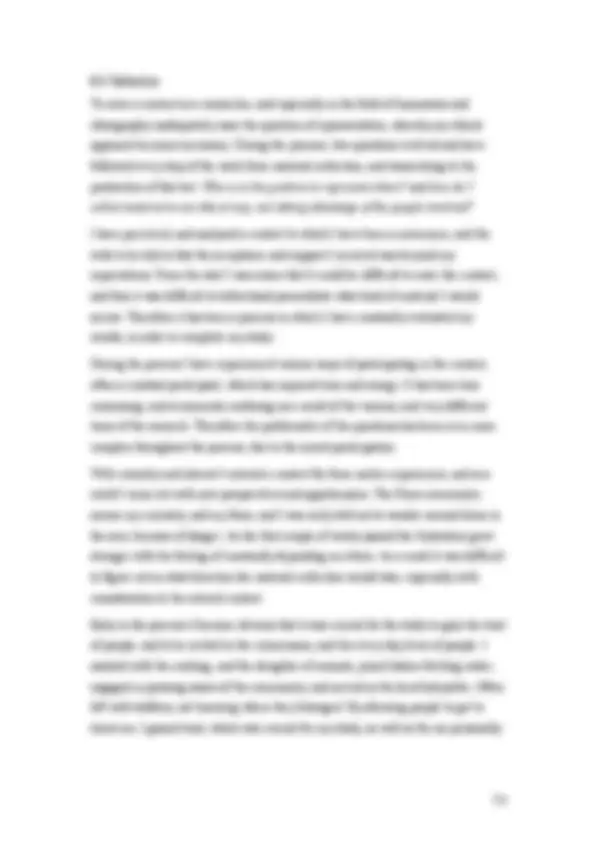
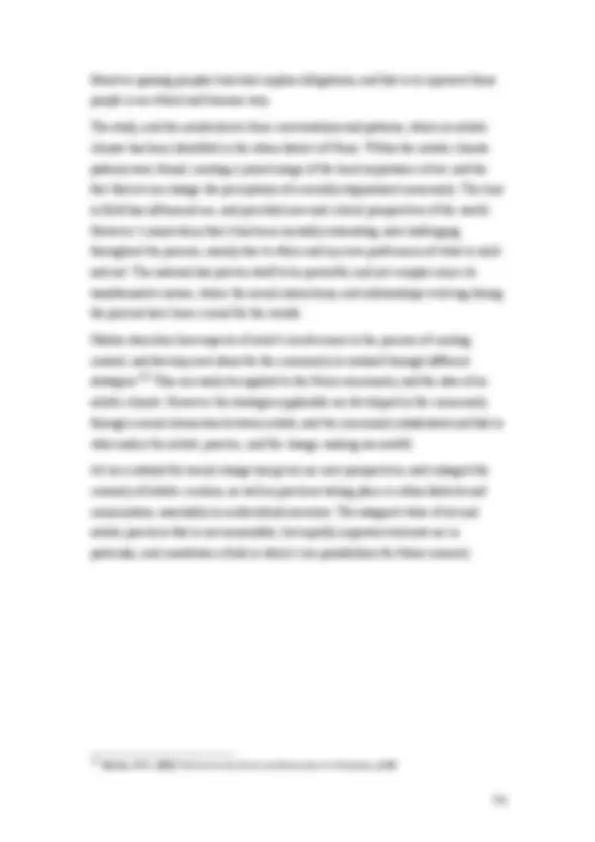

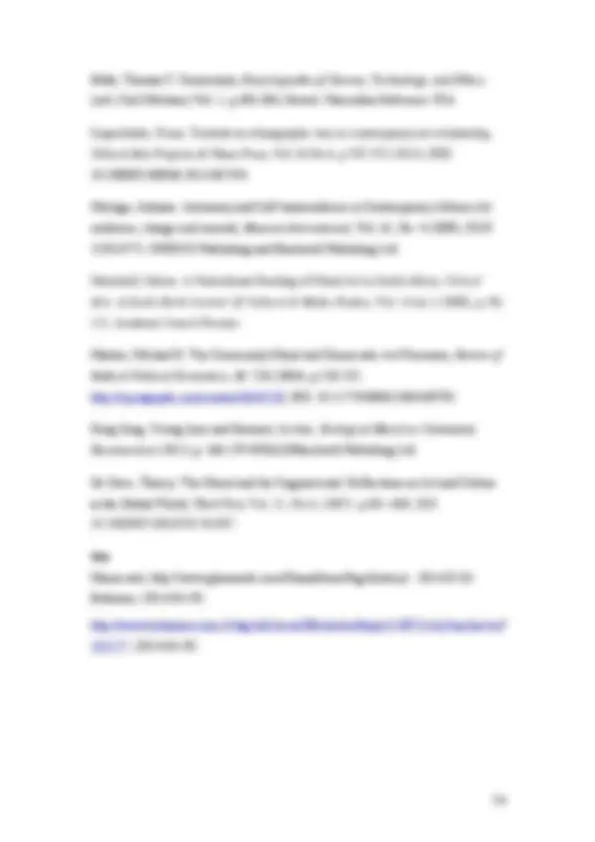
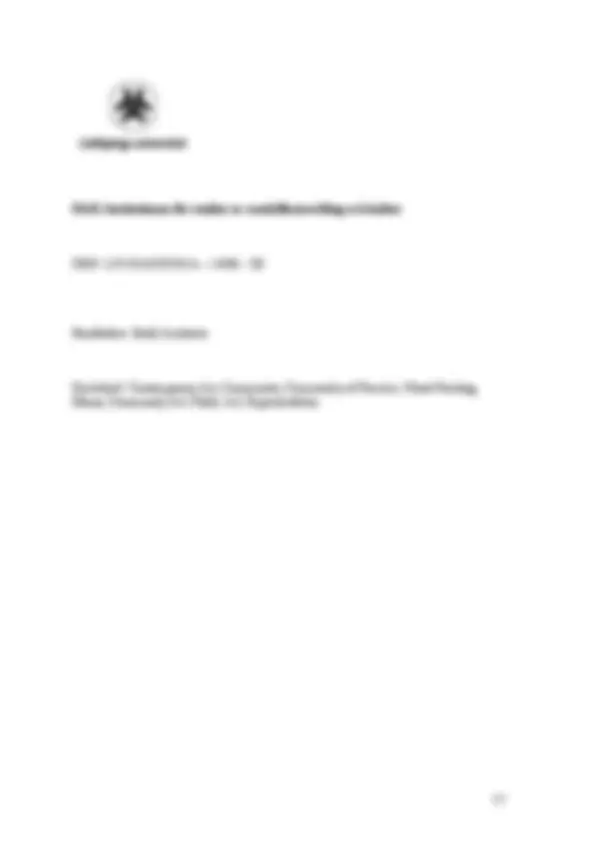


Study with the several resources on Docsity

Earn points by helping other students or get them with a premium plan


Prepare for your exams
Study with the several resources on Docsity

Earn points to download
Earn points by helping other students or get them with a premium plan
Community
Ask the community for help and clear up your study doubts
Discover the best universities in your country according to Docsity users
Free resources
Download our free guides on studying techniques, anxiety management strategies, and thesis advice from Docsity tutors
This master thesis explores the role of contemporary art in Ghana's Nima community as a catalyst for social change, focusing on community murals and the interaction of people in the art production process. The study also discusses the importance of art education and the function of public art as a way to rebrand and change perceptions of place.
What you will learn
Typology: Study Guides, Projects, Research
1 / 82

This page cannot be seen from the preview
Don't miss anything!











































































Institutionen för studier av samhällsutveckling och kultur – ISAK LiU Norrköping
Masteruppsats från Masterprogram i Konstnärlig gestaltning Linköpings universitet, LiU Norrköping, 601 74 NORRKÖPING
Author: Matilda Lindström Title: Contemporary Art as a Catalyst for Social Change: Public Art and Art Production in a Community of Practice Supervisor: Bodil Axelsson
This master thesis contextualise, and discuss the contemporary art as a catalyst for change, and raises social issues through art production in the urban district Nima. Perspectives of "community", and "community of practice" affiliates with examples of placed based art, mainly mural paintings performed in the urban landscape of the community, in the stigmatised community Nima, an area in Ghana’s capital Accra. The study has identified an artistic climate that is emerging from within the community, where artists have created a system for various forms of arts education. The artistic climate is a process of social practice, and this study further discuss the interaction of people in the process of art production, which provides both local, and global perspectives of art. Issues of representation, especially who is in the position to represent others, and how others are in fact represented are discussed and analysed as well as the terminology of “African art”.
Key words: Contemporary Art, Community, Community of Practice, Mural Painting, Ghana, Community Art, Public Art, Representation
Situated in the heart of Accra is Nima, one of the most densely populated, multi-ethnic communities in Anglophone West Africa. It is a lively community with markets, traffic jam and street vendors. The places to meet are few and the community is crammed with people. Nima is a slum area, and many of the problems you find are due to issues associated with slums. The roads and streets are small and dirty, with drains and gutters placed openly on the streets. In Nima it is possible to find almost everything and it has something for everyone. Most importantly, the community displays the value of talent, creativity and social relations.
Nima Muhinmanchi Art (NMA) , from now on referred to as NMA , is a non- governmental organisation, working from within the Nima community to provide avenues for the public to access arts and culture. The name of the organisation in itself, translated to English “the importance of art in Nima”, highlights the role art plays in shaping the cultural fabric of Nima. The co-founders Robin Riskin, Amin Larry Yussif, Nicholas Wayo and Musah Swallah who are the executives, define the organisation to be both a platform for art and learning, as well as an instrument for social change, transforming communities and changing lives through public art, and arts education. The organisation was initiated as a project in 2011 and brought artists in the area together, creating a network for sharing, and exchanging experience, and knowledge in the field of art. The project was so well received in the community that it turned into an operating organisation, located in the heart of the Nima community.^2 Essentially NMA provides a network for member artists with member-meetings every month, discussing the development of the organisation, and on-going projects. Secondly the organisation organises public mural paintings, and art exhibitions in the community, with the participation of, and interaction with community inhabitants, particularly the youth. Thirdly NMA provides after school activity on Saturdays with workshops for children and youth, where member artists educate in art production, and creativity. Altogether the organisation incorporates art as a crosscutting device for urban development objectives, and brings art to the public spaces of the community, mainly through mural painting projects. As an associated partner I was linked with the organisation through shared visions, and ideas of art as a catalyst for change, as well as the belief in art's ability to reshape perceptions, and social stigmas of the community.
In Nima there is the implicit assumption that through art there is the possibility, and potential to accomplish change. Therefore this study explores, and examines the way people talk about, and discuss art and its ability to function as a catalyst for change, primarily through the interaction of people in a contemporary community setting. The study explores art as a catalyst for change in the given and specific context of Nima community, a slum area centrally located in Ghana’s capital city Accra. The study (^2) Interviews with the NMA executives Robin Riskin, Amin Larry Yussif, Nicholas Wayo and Musah Swallah
provides knowledge of the local context and explores possibilities for the contemporary art to highlight, build from, and to expand the contemporary public debate. By doing so, and also by entering the global art scene, artists are exposed to conventions of the field, mainly associated with representation where the African is often regarded as a unity. The global art scene will be further problematized in the next chapter, presenting challenges connected to the field of locally produced art. 1.1.1 Ghana – The Gold Coast Present day Ghana finds itself in a postcolonial context, where the nation is still under construction and endeavours to build and develop its own societal structures, including functioning educational and economic systems. The country’s official webpage emphasise that the year of independence 1957, Ghana was the first African nation to gain independence from colonial rule. The event of independence is crucial for the nation of today.^3 This is an important aspect of how the artistic climate is emerging from the urban district Nima, and the process of breaking free from the past, and expanding into a global art scene. I have chosen to narrate the history of Ghana based on perspectives from within the country, and thereby not interpret the historical writing based on Western values and perspectives. Therefore Ghana’s official webpage will serve as the main source in this paragraph. It is impossible to study the art scene without considering the colonial past, and the fact that the country is still in a postcolonial context. Although the colonial past of Ghana is not the focus of this research, it is ignorant, and misleading to perform a study about an African community without regarding the past, and the effects on the present, as well as the process involved in rebuilding an independent nation. Before gaining its independence in March 1957 Ghana was called the Gold Coast. The Portuguese were first to arrive in the 15th century, and the area became known as the Gold Coast since Europeans knew the area was the source of gold. The centuries that followed, many nations saw the Gold Coast as an attractive land due to its wealth in gold, as well as its location on the West Coast. Historically the land has belonged to Sweden, Denmark, Germany and England and with the European plantations in the New World in the 1500s the demand for slaves increased. The slave trade soon overshadowed gold as the main export, and according to the official webpage the (^3) http://www.ghanaweb.com/GhanaHomePage/history/ (2014-‐ 05 -‐02)
Through the material three approaches have emerged based on the starting point that contemporary art may function as a catalyst for social change. The different approaches are transformed into three empirical chapters, where the Nima community in Accra/Ghana will serve as the common focus. Together the chapters constitute a narrative of place in a given context. The first empirical chapter: “The Artistic Climate of Nima” explores arts education in a community context, built from the initiative of a cultural apprenticeship. The chapter discuss how the non-governmental organisation NMA provides a network for artists, in order to empower youth and create opportunities for them to express themselves creatively. The artistic climate of Nima will be discussed and explored based on four different aspects: (1) Cultural apprenticeship, (2) Artistic network, (3) Empowerment of Youth, and (4) Community Development. Different aspects of art in a community context will be further explored in the second empirical chapter “Mural Painting as Community Changing Practice”. The chapter discuss murals as methods for raising awareness, and in varied ways reach out to people in the community, and therefore also function as a catalyst for change. The chapter focus on the three aspects: (1) Artist as Contributors to Change, (2) Rebranding of Place, and (3) Creation of Venues. The first two empirical chapters discuss art within the context of the Nima community. The third and last empirical chapter “The Importance of Art” provides a wider perspective of art, in order to communicate if, how, and why art is important. The chapter focus on three aspects: (1) Art as a Catalyst for Change, (2) Local and Global Perspectives, and (3) Postcolonial Context. Together the three empirical chapters constitute an ethnographical study that positions contemporary art in a community context. Various approaches, and examples of the role art play as a catalyst for change in the given context of Nima community are provided. The first conclusive chapter “Summary and Conclusion” follows the empirical chapters, and the different findings are analysed and concluded, and the research questions answered. In the final conclusive chapter “Reflection” the conclusions are further discussed with consideration to future possibilities in the field of contemporary art in public spaces, in both local and global arenas.
The theoretical framework of this Master thesis is developed according to a qualitative research methodology. Theoretical ideas are elaborated from the empirical material created in field, in order to contextualise the practices. The theory will therefore bring the main material forward. Central for this study is the theory of community of practice developed by Lave and Wenger, which will be explained and contextualized through complementary theories and concepts.
The terminology and concept of ‘community’ can easily lead to confusion because it accommodates various meanings in different fields, and possess several dimensions, such as social, political and ethical. 5 This study makes use of two notions of community. First it makes use of the concept community of practice. Secondly it discusses community in terms of placed-based senses of belonging, connected to issues of power. The two notions of community complement each other by approaching Nima, and the artists with an overlapping approach, creating a community of practice with mural painting as a tool for change. Therefore it is important to clarify the terminology of this specific study, where Nima community will be used to describe and identify the place in which a community of practice emerge as a movement, encompassing people, and art related activities. 2.1.1 Community of Practice Central for this study is the concept of community of practice, described through legitimate peripheral participation, which provides a way to speak about the relation between newcomers and old-timers in a learning context. According to Lave and Wenger the legitimate peripheral participation concerns the process in which newcomers become part of a community of practice, stating that: A person’s intentions to learn are engaged and the meaning of learning is configured through the process of becoming a full participant in a sociocultural practice.^6 This quote, and the argument suggest that the process of learning is not only concentrated to what kind of knowledge that is mediated to others, instead rather on the participation, and involvement in social situations, where knowledge is passed (^5) Hilde, T. C. (2005) Encyclopaedia of Science, Technology, and Ethics , p 383 (^6) Lave, J. and Wenger, E. (1991) Situated learning: Legitimate peripheral participation , p 29
A qualitative sense of belonging therefore attends community, and a broader notion of community also includes common language, rituals, geographical territory, religion, historical memory, and ethnic identification.^11 This is applicable in the Nima community, where tradition, religion, language and history bring people together, and creates a notion of place as a community. Waterton and Smith explain the term community as rarely, or never used unfavourably, or in a negative sense. Therefore community is embraced in a social, and political context where certain practices seem like the right thing to do, and makes people feel good about the work performed in the community. 12 Therefore community can be apprehended as a construction, constituted and assigned meaning by the people interacting within the context. Community exist in the minds of its members, and should not be confused with geographic or sociographic assertions of ‘fact’. By extension, the distinctiveness of communities and thus, the reality of their boundaries, similarly lies in the mind, in the meanings which people attach to them, not in the structural forms.^13 Waterton and Smith discuss community as a construction, based on social relations of power, where community tend to be explained as a solution, rather than something in need of explanation. 14 Referring to Neal and Walter, Waterton and Smith further discuss the notion of community as an action, or process that is constituted in the present, and in a world of doing. 15 This aspect of power is predicated in the conception of community, and is run through with divergent interests. The desire to speak on behalf of others, particularly those marginalized by traditional heritage narratives becomes distinguishable, and representation is thereby a fact. Community then becomes a (re)construction through on-going, power-saturated experiences, engagements, and relations.^16 These aspects might increase the possibility of community-based projects to evolve around inquires from third parties, creating projects for the community, rather than with the community and its inhabitants, as first alluded.^17 This brings the question of who is representing who in the Nima (^11) Hilde, T. C. (2005) Encyclopaedia of Science, Technology, and Ethics , p 383 (^12) Morris and Kuma referred by Waterton, E. and Smith, L. (2010), The recognition and misrecognition of community heritage , p. 8 (^13) Cohen referred by Waterton, E. and Smith, L. (2010), The recognition and misrecognition of community heritage , p 8 (^14) Waterton, E. and Smith, L. (2010), The recognition and misrecognition of community heritage , p 5 (^15) Neal and Walters referred by Waterton, E. and Smith, L. (2010), The recognition and misrecognition of community heritage , p 7 -‐ 8 (^16) Waterton, E. and Smith, L. (2010) The recognition and misrecognition of community heritage , p 8 (^17) Ibid, p 7
community, where the work of local organisations canalize perspectives from both the inside and the outside world, which will be further discussed below when discussing postcolonial perspectives.
The post-colonial perspective reflects the present state of Ghana, an independent country, working to create, and develop its own structures, and traditions with regards to the history, and with a strive for the future. As highlighted by Marschall the issue of representation deriving from art created in the public space, raises questions of who is in the position to represent others, and how others are in fact represented. 18 The issue of representation becomes visible when exploring the artistic climate of Nima, and central in the exploration of contemporary art as a catalyst for social change, including the work of NMA. Marschall discuss representation and power with particular reference to mural paintings. It must be pointed out that most murals, while painted with a diverse, multi-cultural group of artists and sometimes even ordinary people from the local community, are still initiated by white project managers, who organise funding, negotiate with sponsors or clients, select artists, and co-ordinate the painting of the mural.^19 As will be discussed in the study below, the involvement manifests, and reflects the position of dependence that is placing the community in a postcolonial era. Aspects of ordinary people’s daily life can be conveyed, and reflected through the murals, and also enables public statements to be distributed to the mass. Marschall discuss this as a problematic question of authenticity, which also questions the impact of the people represented. 20 Murals nevertheless could constitute a public voice that speaks about people, and according to Marschall the creation of murals is a way to define the identity of local communities.^21 The implication here is that the social norm of being from a white middle-class background effectively exempts those groups from discussion. Consequently the mural paintings can be seen as both an expression of the (^18) Marschall, S. ( 2000 ), A Postcolonial Reading of Mural Art in South Africa , p 115 (^19) Ibid, p 115 (^20) Ibid, p 114-‐ 115 (^21) Ibid, p 115
action, process, power, and change. And thereby through critical conceptualisation make use of the rhetoric involved in the process.^28
In this section, research of relevance for the study will be presented, focusing on local and global intersections of art and postcolonial communities. Areas that in various levels are central for the research in the field of contemporary, and community based art practices, and initiatives. Throughout the review of previous research I will present different approaches, connected to current practices. Thierry de Duve describes the global art world through the phenomenon of biennales, situated all around the world. In the text The Glocal and the Singuniversal: Reflections on Art and Culture in the Global World he explains different approaches of impact of art in global contexts.^29 The author explicates that the phenomenon oscillates between optimistic, and pessimistic approaches. The optimistic demonstrates a successful integration of the local, into the global that embrace the redistribution of cultural power amongst different regions of the world. The pessimistic on the other hand suggests that the phenomenon of biennales implies a new form of cultural hegemony, of local by the global, conducted by the Western world.^30 De Duve therefore suggests that biennales are in fact cultural experiments in the global economy, reconciled with local interests that provide aspects of power. 31 In different chapters of my study I discuss aspects of power, however from the perspective of representation-based power, focusing on local and global perspectives in a community context. In the aggradation The Global Art World Inc: On the globalization of contemporary art Charlotte Bydler discuss and examines segments of the art world-system in which geographical distances seemed to vanish as a result of faster, and more intense interaction levels. 32 Art in a postcolonial context incorporates important aspects of the study, where representation constitutes the central part of the discussion. Who are in fact in the (^28) Waterton, E. and Smith, L. (2010), The recognition and misrecognition of community heritage , p 5 (^29) de Duve, T. (2007) The Glocal and the Singuniversal: Reflections on Art and Culture in the Global World , p 681 (^30) Ibid , p 683 (^31) Ibid , p 682-‐ 683 (^32) Bydler, C. The Global Art World Inc: On the globalization of contemporary art , http://sh.diva-‐ portal.org/smash/record.jsf?pid=diva2%3A416346&dswid=
position to represent others, and the stereotype image of African art? Mikela Lundahl accentuate that when entering the global art scene, the fact of representation is pushing artists from Africa into certain categories, not allowing them to engage in universal questions. 33 She further explains that there is an assumption that artists from Africa are supposed to represent the continent, countries and most importantly the cultural heritage of their origin.^34 They are expected to operate in an unbroken tradition, stretching back in generations. This violates the contemporary idea of art being a catalyst of the present, and evolving around modern societies. Not only creating tensions between local and global arenas, but also placing the art in a postcolonial community context. A context in which African artists are expected to produce art with an obvious implementation of cultural representation, based on ethnicity, and identity that is shared with others with the same origin.^35 Naturally as accentuated by Lundahl it creates a problematic. Many artists find inspiration from the place where they have their practice, and naturally portraying things that are close. However the problem dwells in the way it is always expected that artists from the African continent represents Africa in a certain way, and yet not allowing the artists to approach universal questions, since universal questions tend to centre around western countries. Lundahl provides my study with valuable insights in the postcolonial field, especially in the discussion of “African art”. The postcolonial perspective on contemporary identities, and art is further discussed by Maria Eriksson Baaz, introducing the postcolonial through a quote by the Senegalese artist Iba N’Diaye, that describes the postcolonial aspects of art produced by artists in Africa. 36 I have no desire to be fashionable. Certain Europeans, seeking exotic thrills, expect me to serve them folklore. I refuse to do it—otherwise, I would exist only as a function of their segregationist ideas of the African artist.^37 In the introductory chapter of the book Same and Other: Negotiating African Identity , Eriksson Baaz argue, supported by theories of Stuart Hall, that identities change, and modify as a result of shifting social configurations, and power relations. One of the (^33) Lundahl, M. (2004) Postkolonial kritik och konst , p 17 (^34) Ibid, p 16 (^35) Ibid, p 17 (^36) Eriksson Baaz, M. (2001) Same and Other: Negotiating African Identity in Cultural Production , p 5 (^37) Quote of Iba N’Diaye, quoted by Eriksson Baaz, Same and Other: Negotiating African Identity in Cultural Production , p 5
Young Imm Kang Song, and Jo Ann Gammel further discuss perspectives of mural painting, and community art in the article Ecological Mural as Community Reconnection. Based on a specific context, the authors finds patterns where the murals can serve as effective tools to create awareness of environmental issues in local communities. Murals are particularly visually captivating forms of public art due to their size and accessibility. Mural images also capture public attention and provoke viewers to explore layers of meaning and find hidden stories. They are often in places that people come to visit, study, play, congregate and discuss matters that may relate to the content of the mural.^44 Therefore Kang Song and Gammel provide perspectives of mural painting, and it’s importance, as well as its ability to create awareness, and change in local communities. The article provides valuable insights in mural painting practices in a local context, and presents similarities with my study in the way it investigates community-based art projects.^45 Like my study this article reflects how the local art scene, consisting of artists, students, community members and non-profit organisations collaborate to realise projects, and build for a better community. In the text The Community Mural and Democratic Art Processes , Michael R. Mosher enunciate murals to be an art process in which community discussions, and issues can be highlighted. He highlights the process of community mural development, through a nine-step process for maximising professionalism, community participation, and decisions.^46 My study does not apply any methods for implementation of community- based mural painting; rather it serves as a pure observation of present structures. However Mosher provides valuable ideas for an extension of research, developed in this study. Like the studied context, the project described by Mosher has enabled youth to access higher education, and explore new parts of their city, and thereby created a greater sense of belonging in the community. Mosher considers community murals as one of the most democratic mediums, since it creates structures that involves different fields, and consist of a combination of professions, both artists, and community inhabitants. 47 The author’s definition of community art has been valuable (^44) Kang Song, Y. I. and Gammel, J. A. (2011) Ecological Mural as Community Reconnection , p 266 (^45) Ibid. (^46) Mosher, M.R. (2004) The Community Mural and Democratic Art Processes , p 528 (^47) Ibid, p 529
for the development of a framework for this study, where community has been the main approach. Let us define “community arts” as art removed from the present commercial art world and market systems—not commodified objects but contextualized, specific, sited-group expression. If such art is by an individual, it is usually with the community’s input or cognizance of its issues. It heals the split between art and the general populace that deliberate investment strategies have brought about, bringing the arts back to something approaching their rich significance in previous societies.^48 Mosher further consider community art to be content driven stories of people, and particularities in society, including race, ethnicity, and class where realism is a matter of content rather than form. 49 The research and theories presented in this chapter constitute previews of the field in which my master study operates. The framework developed in this chapter thereby serve as a foundation for the material collected in field, and assists the process of producing discussions, analyses and reflections. (^48) Mosher, M.R. (2004) The Community Mural and Democratic Art Processes , p 530 (^49) Ibid.